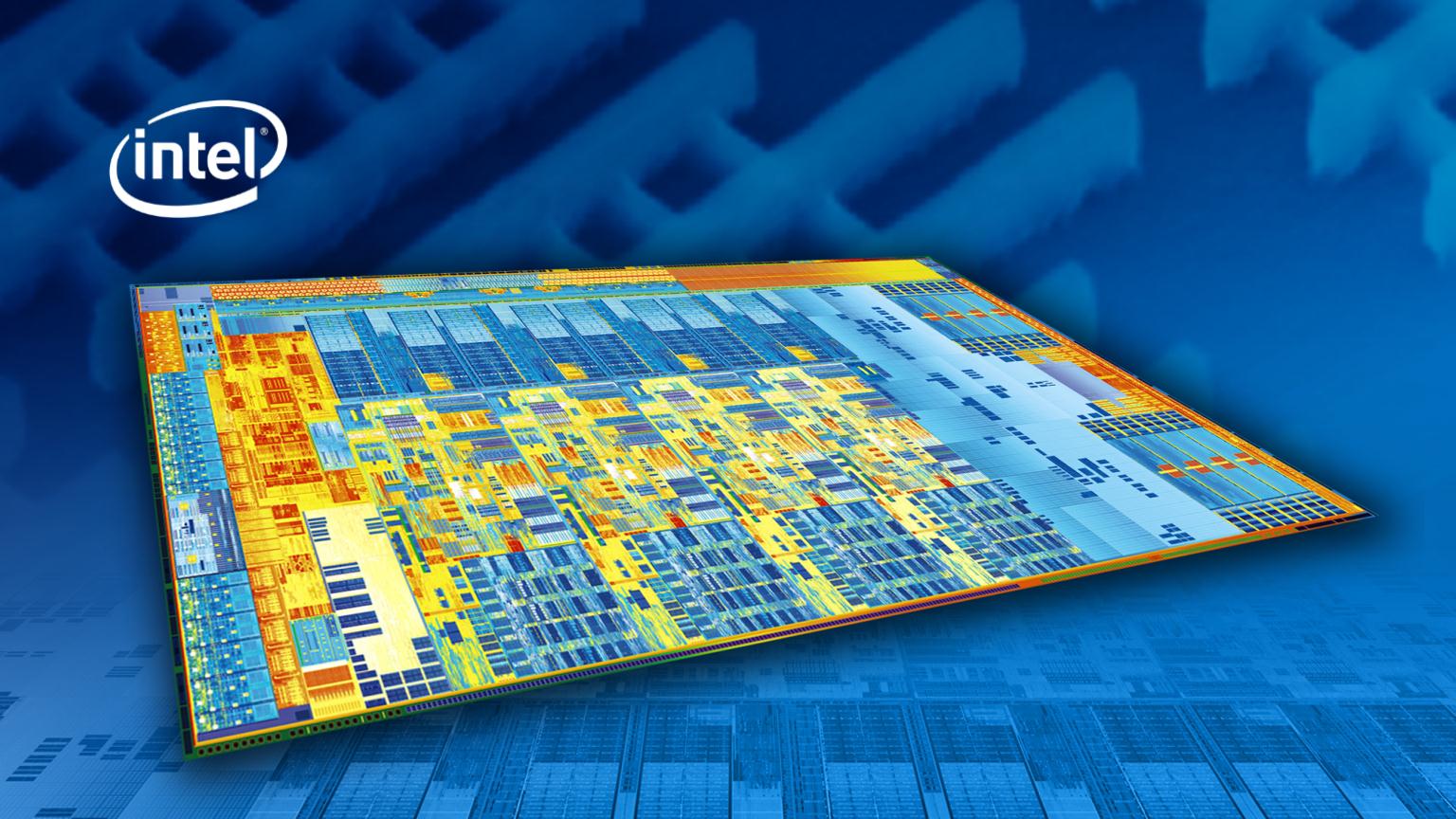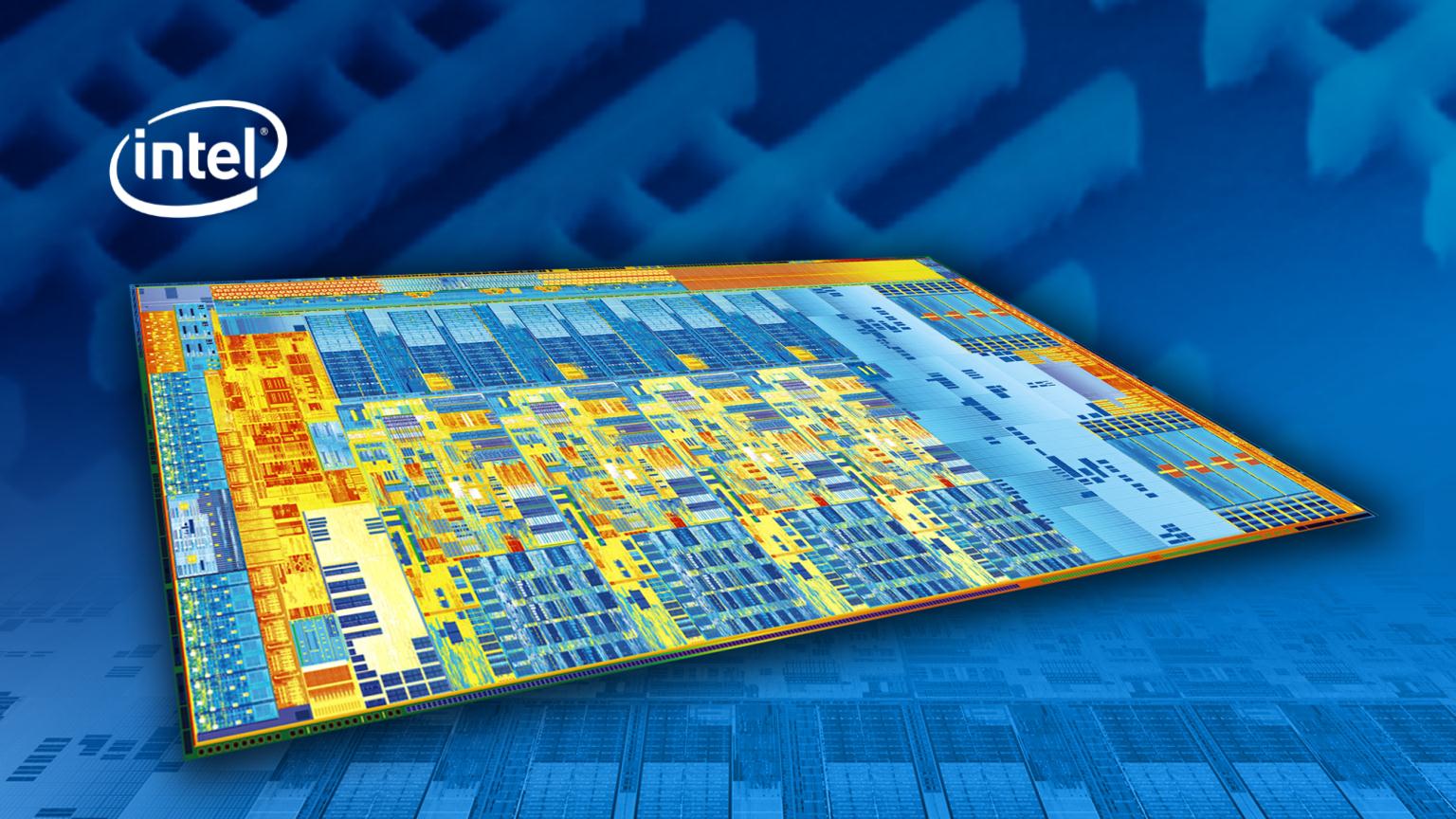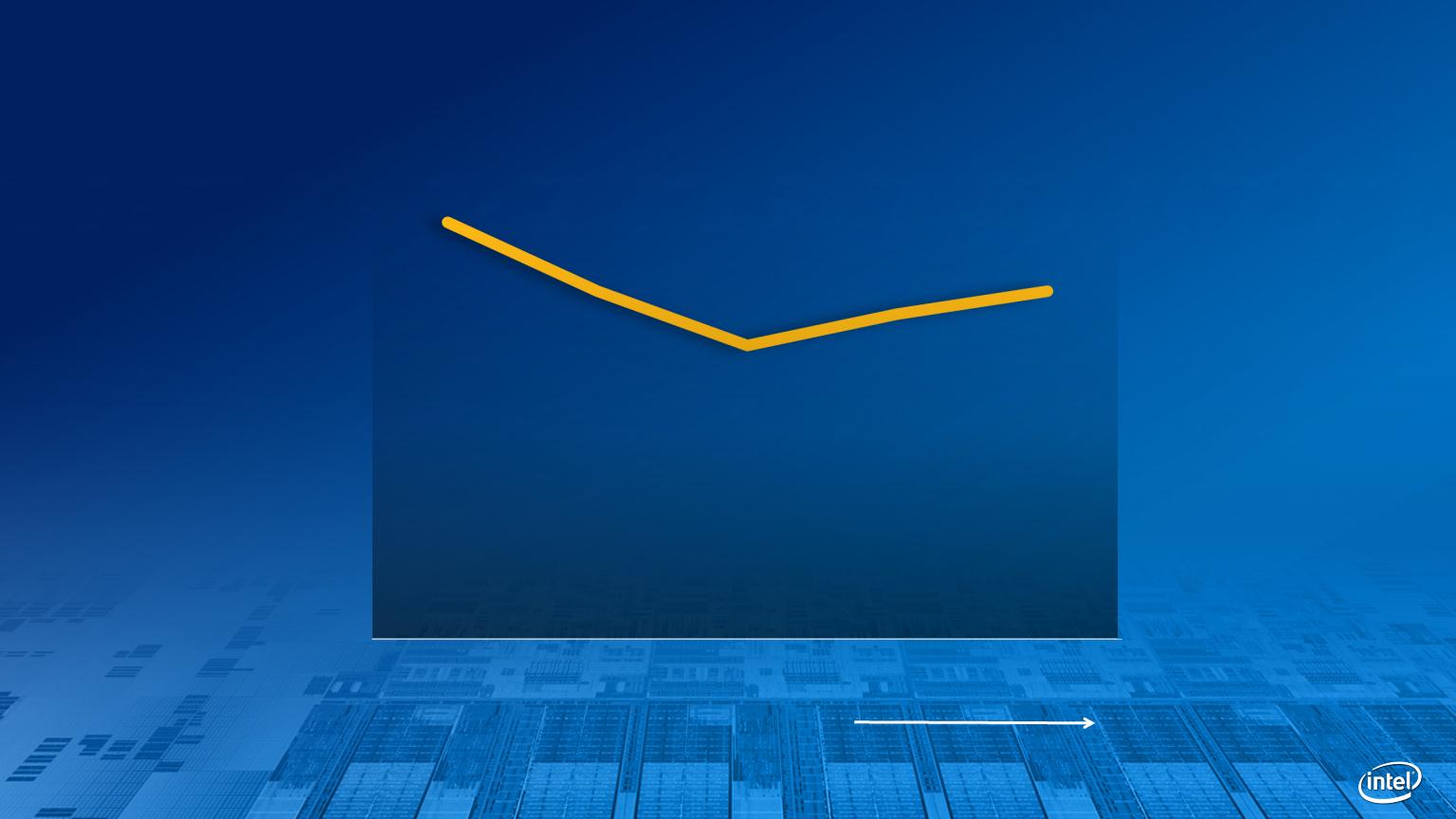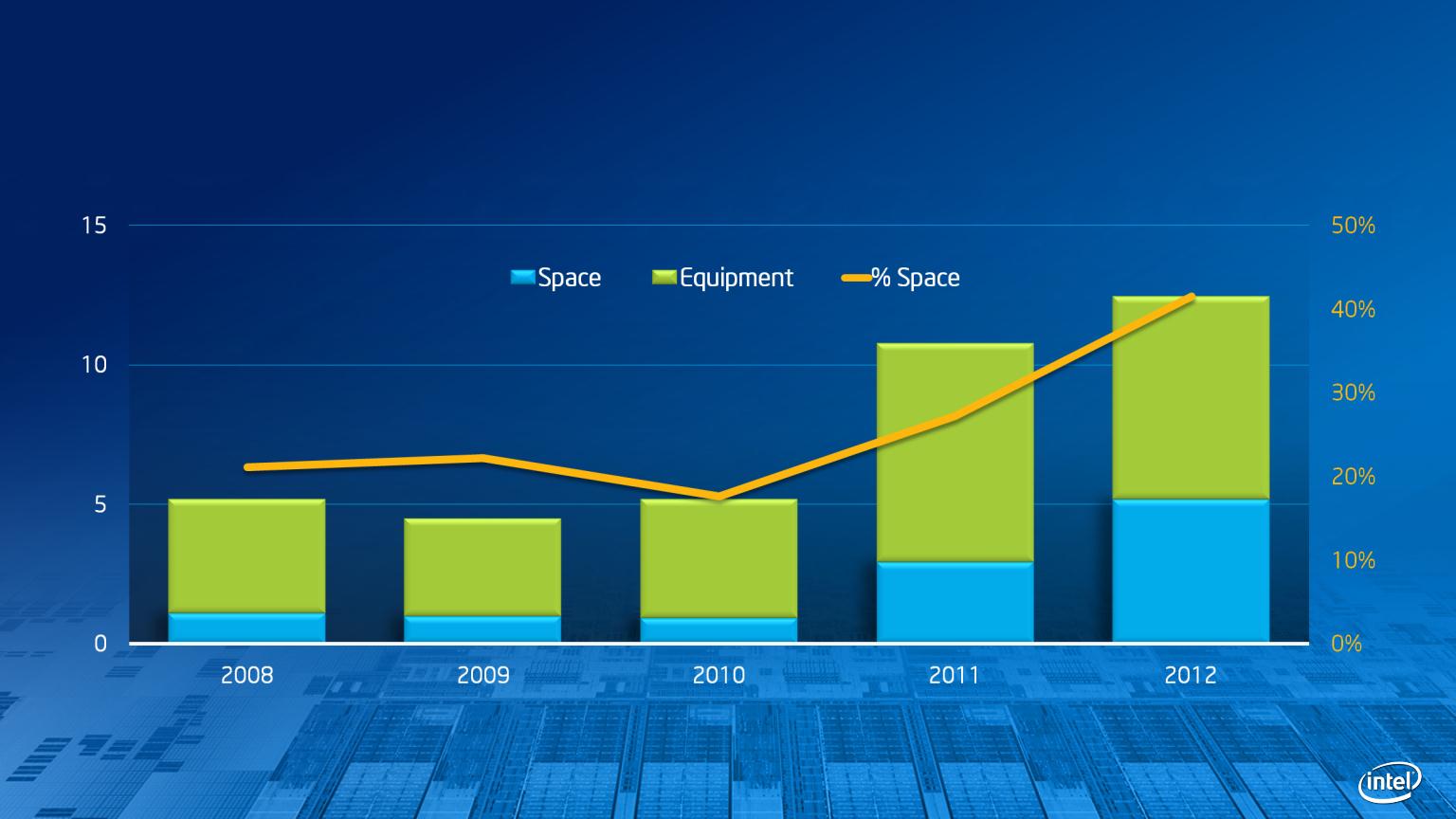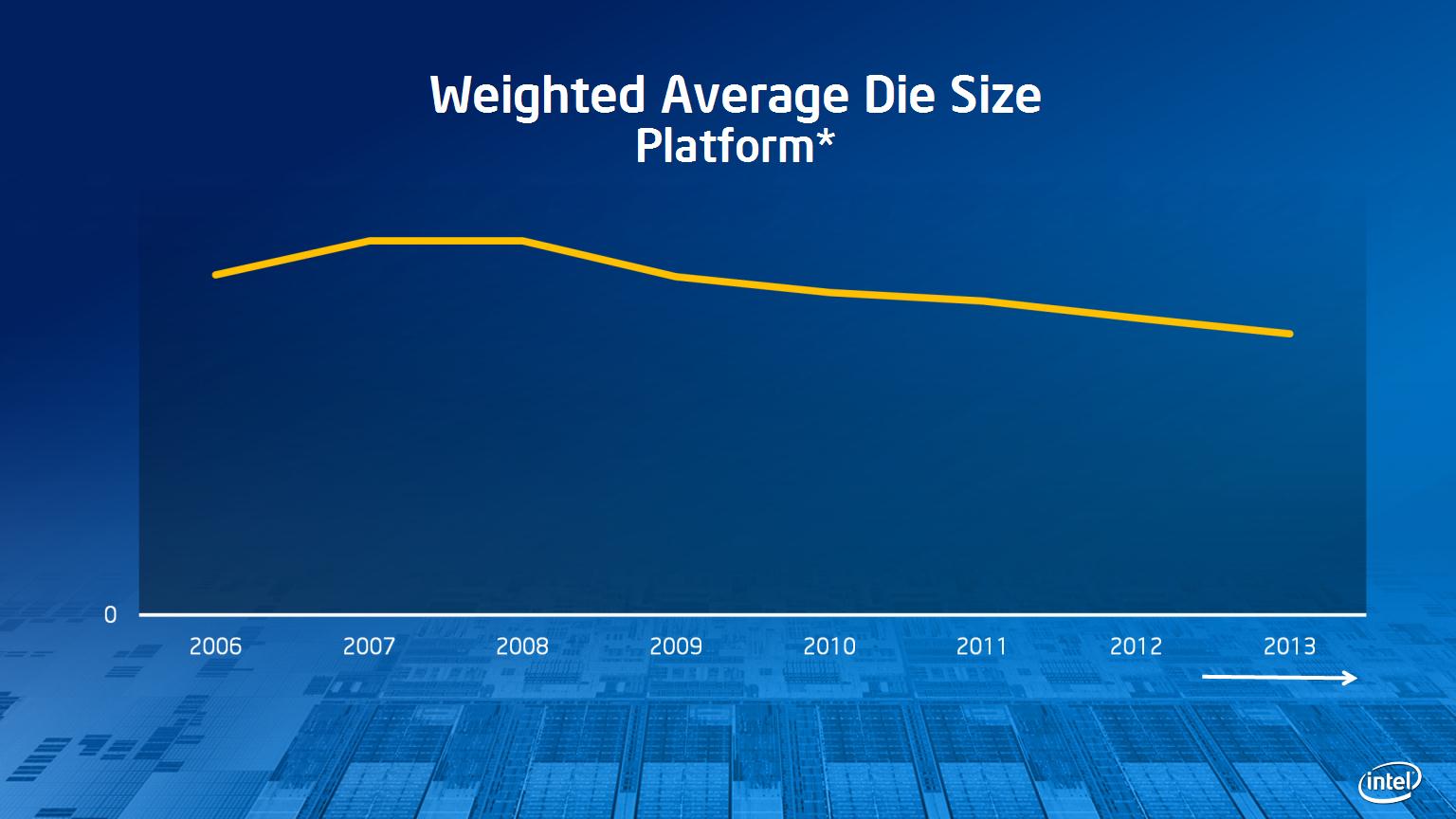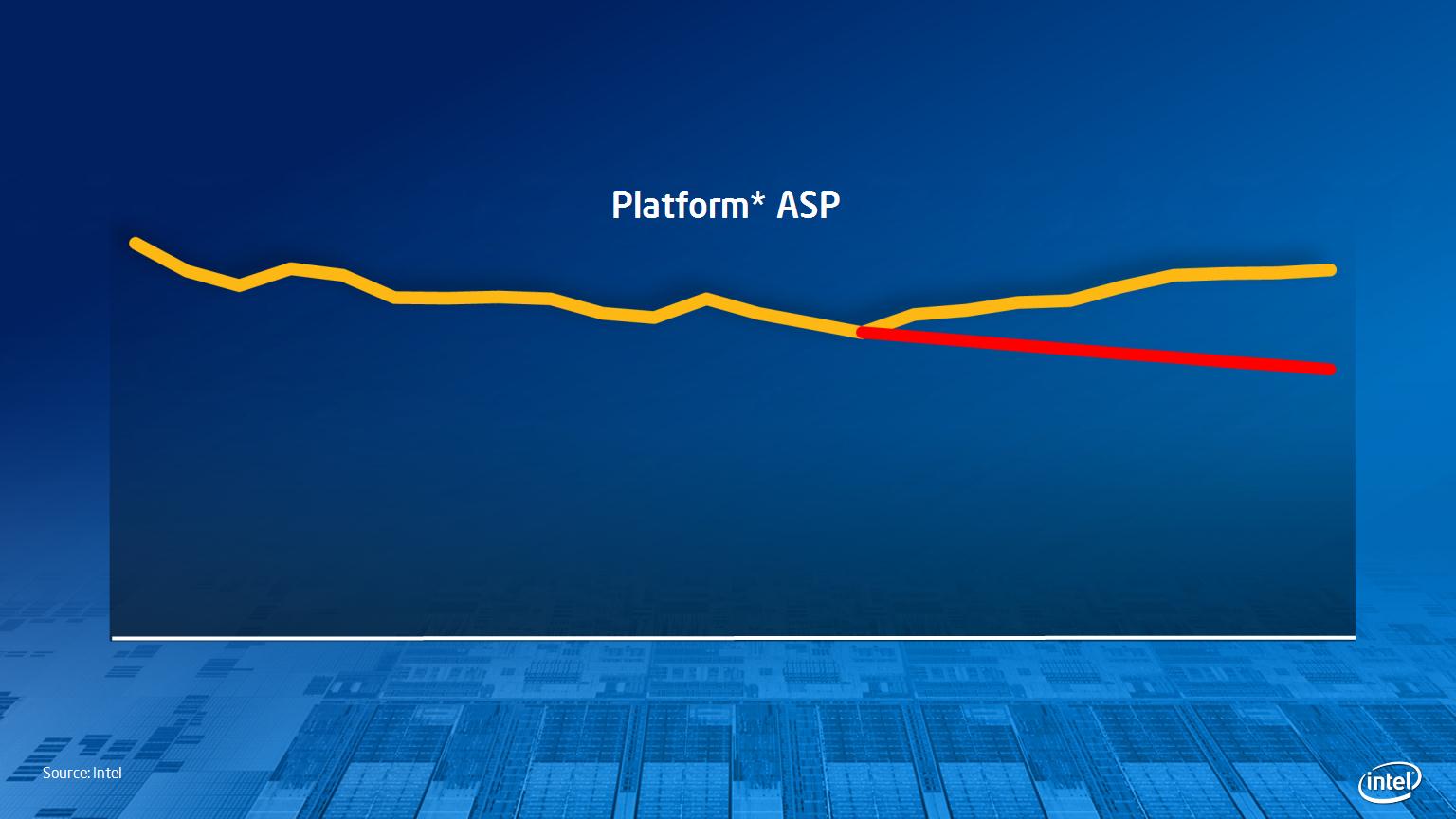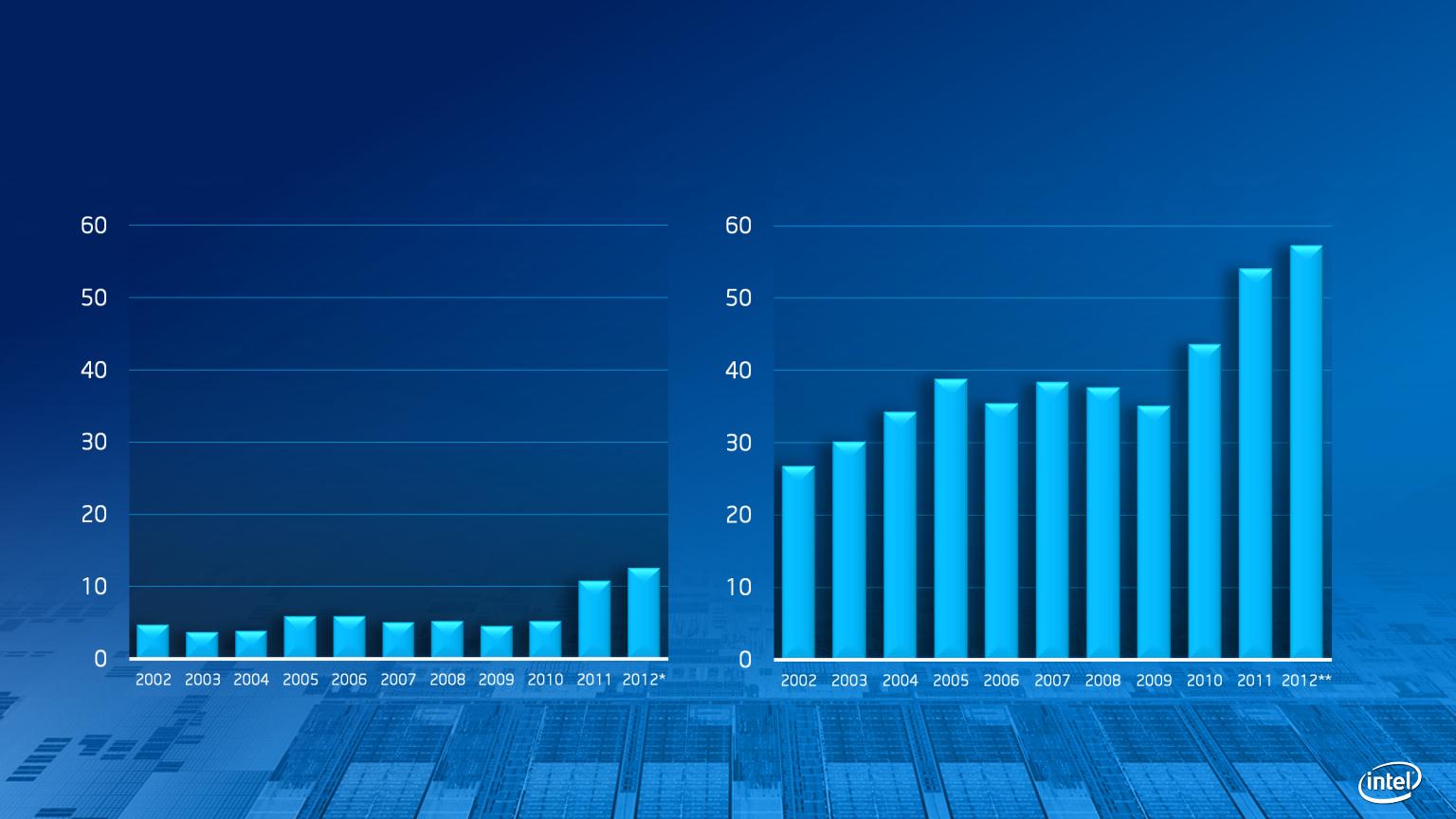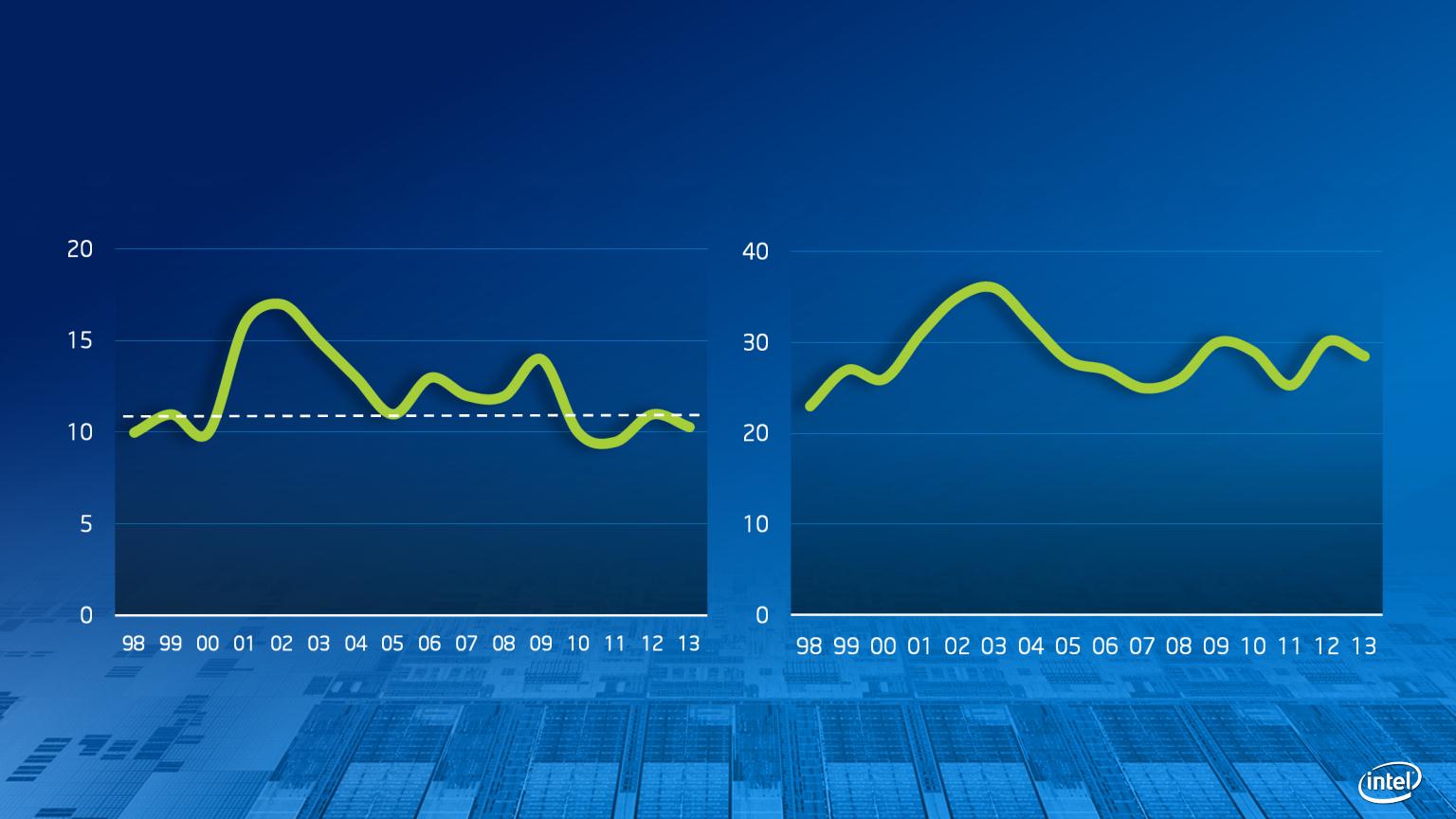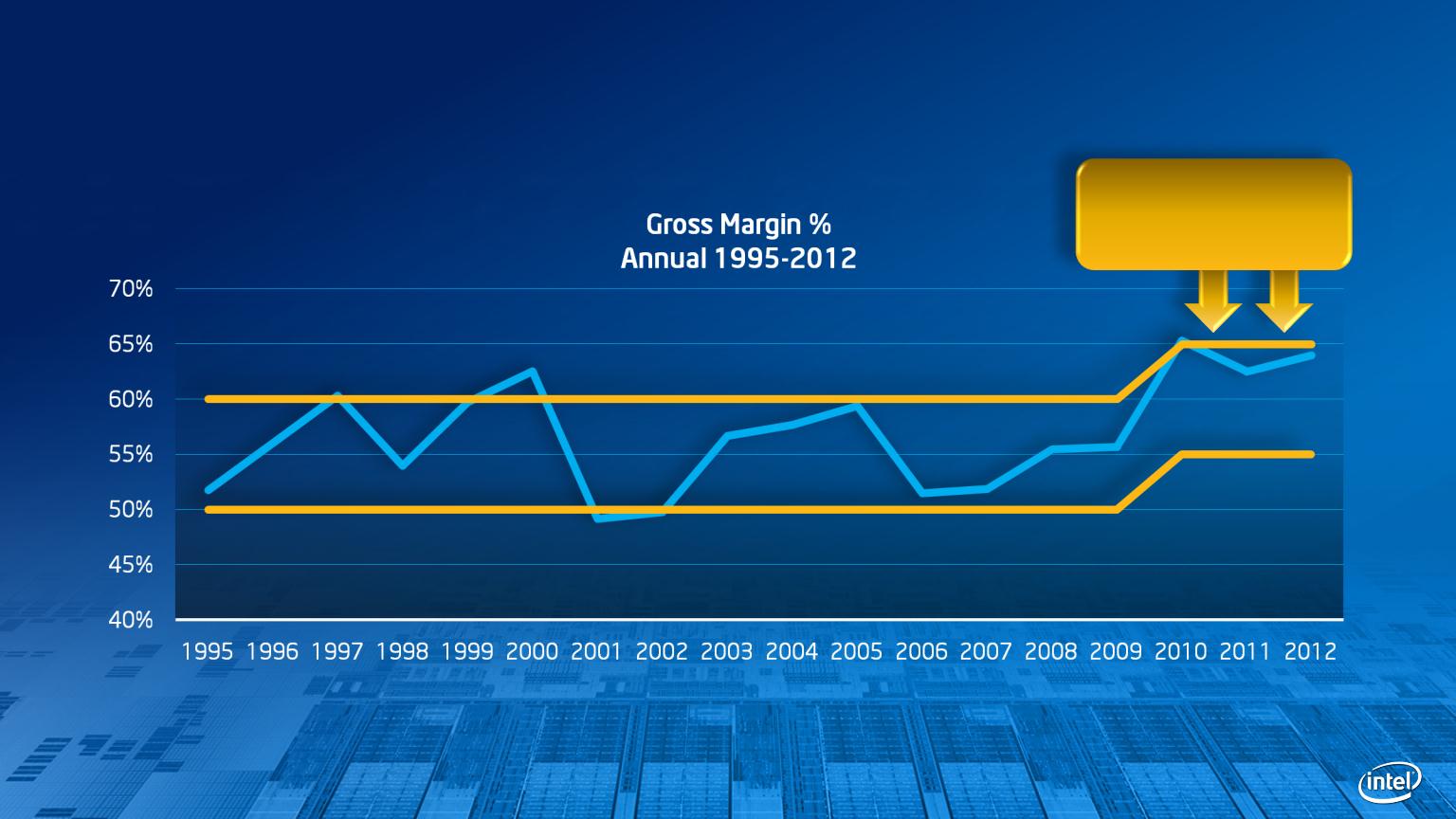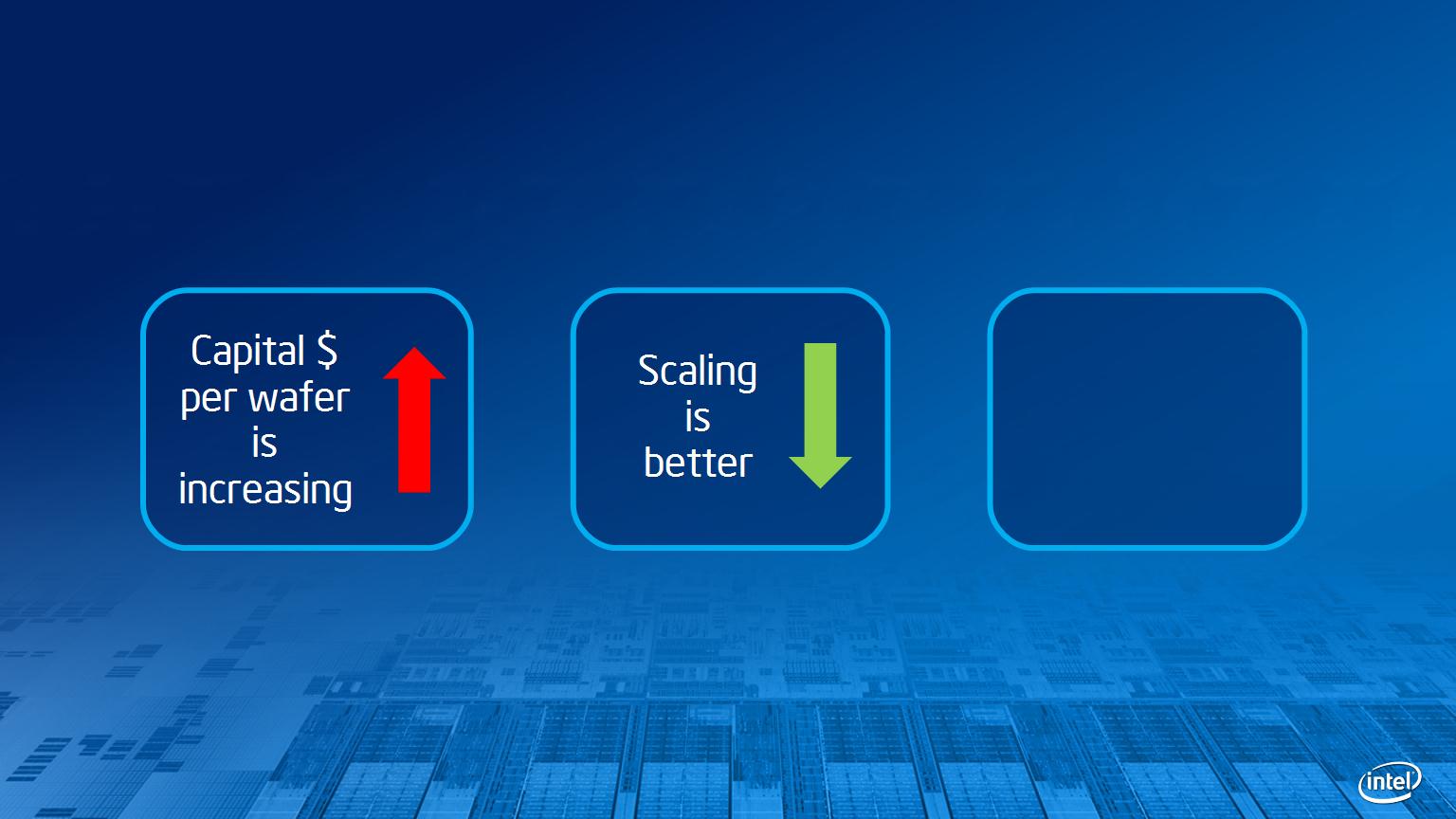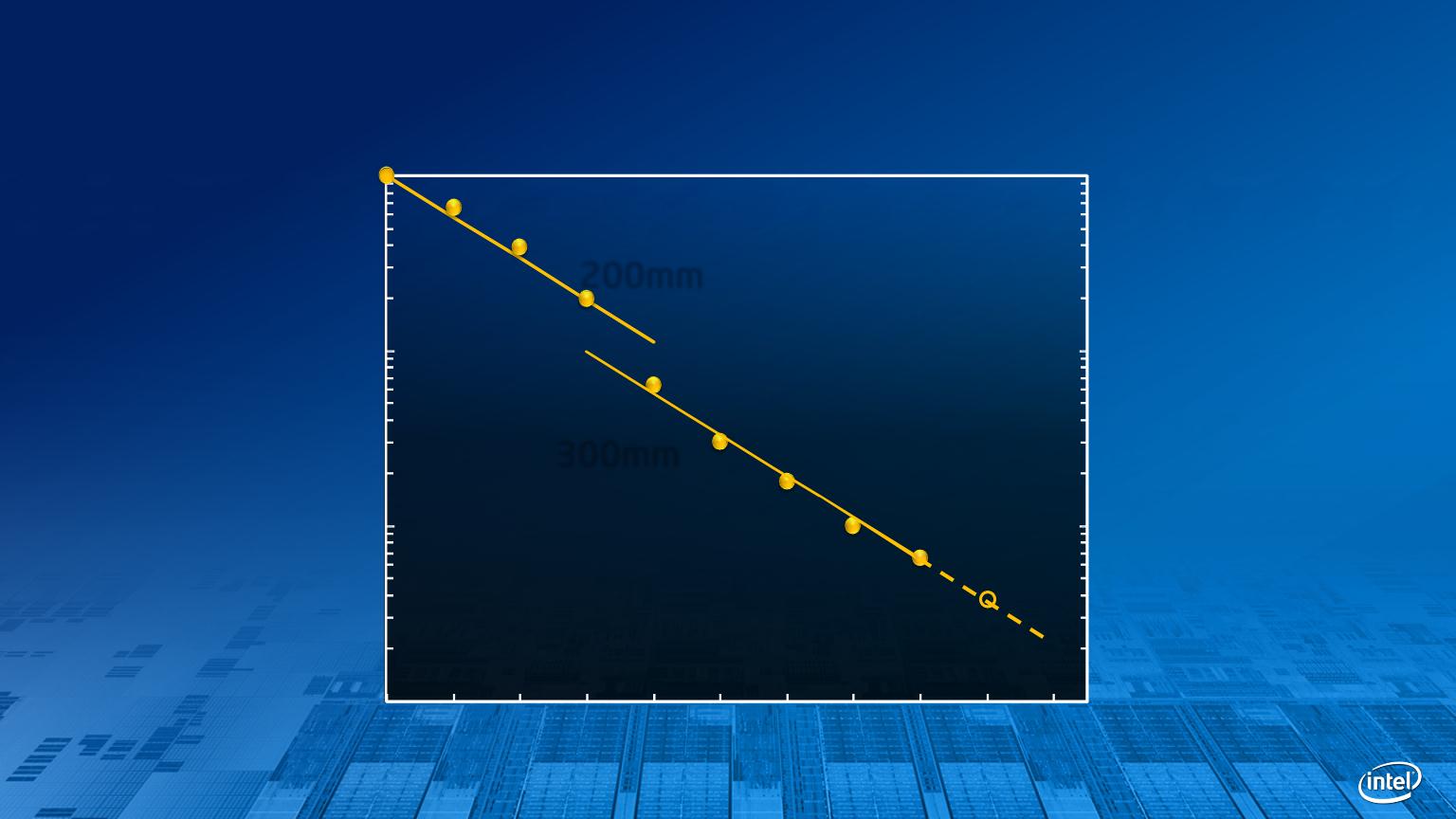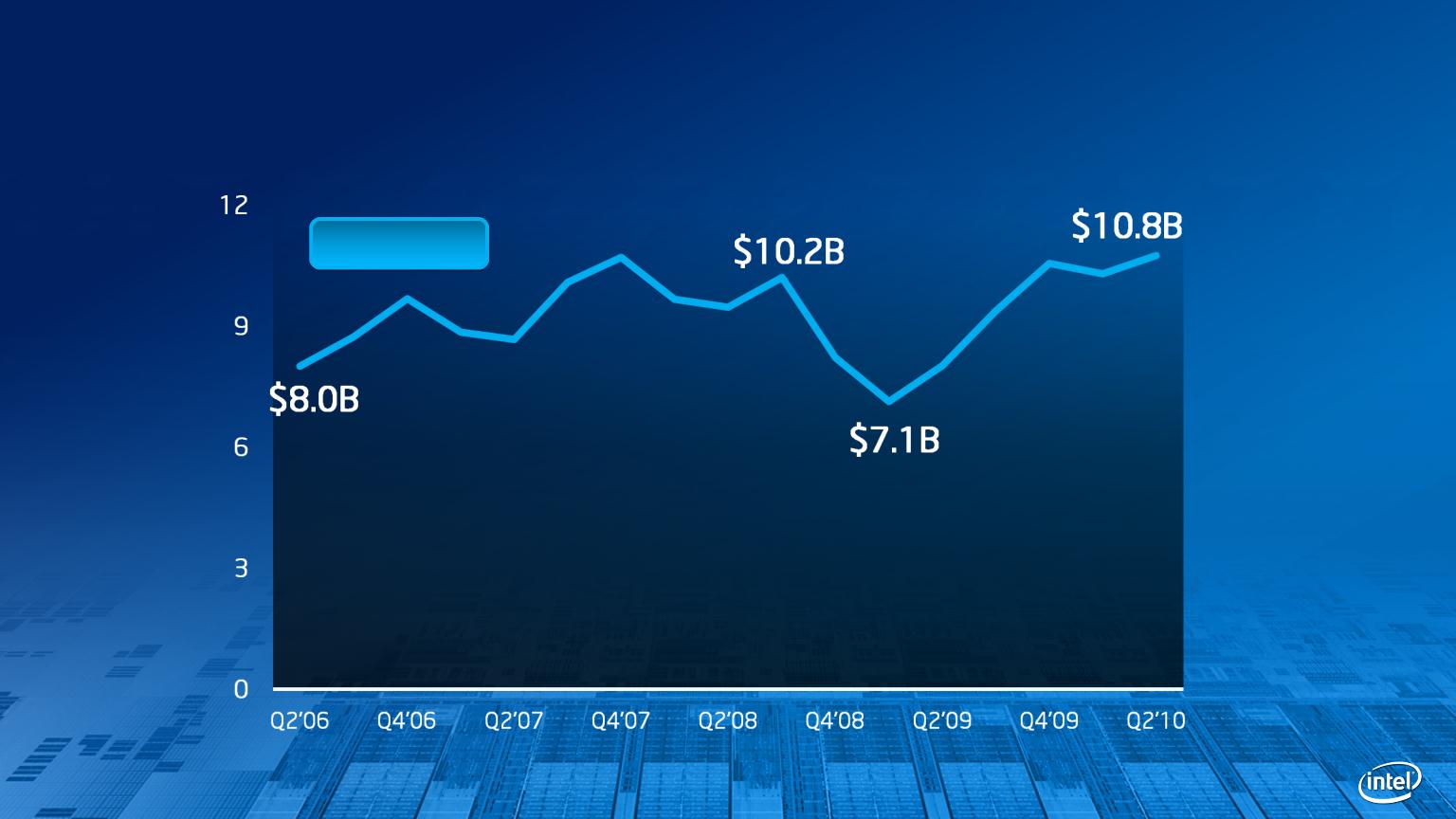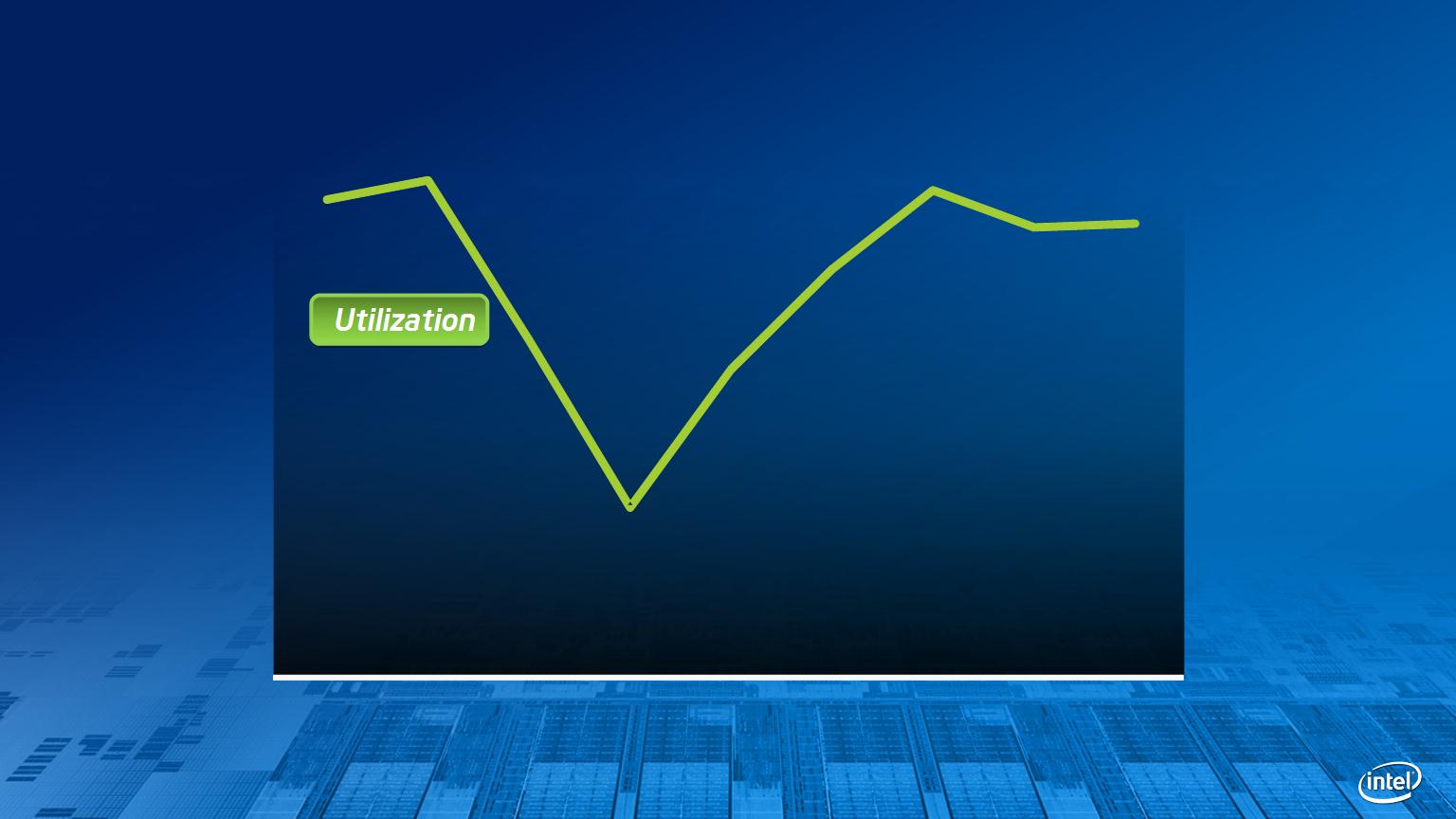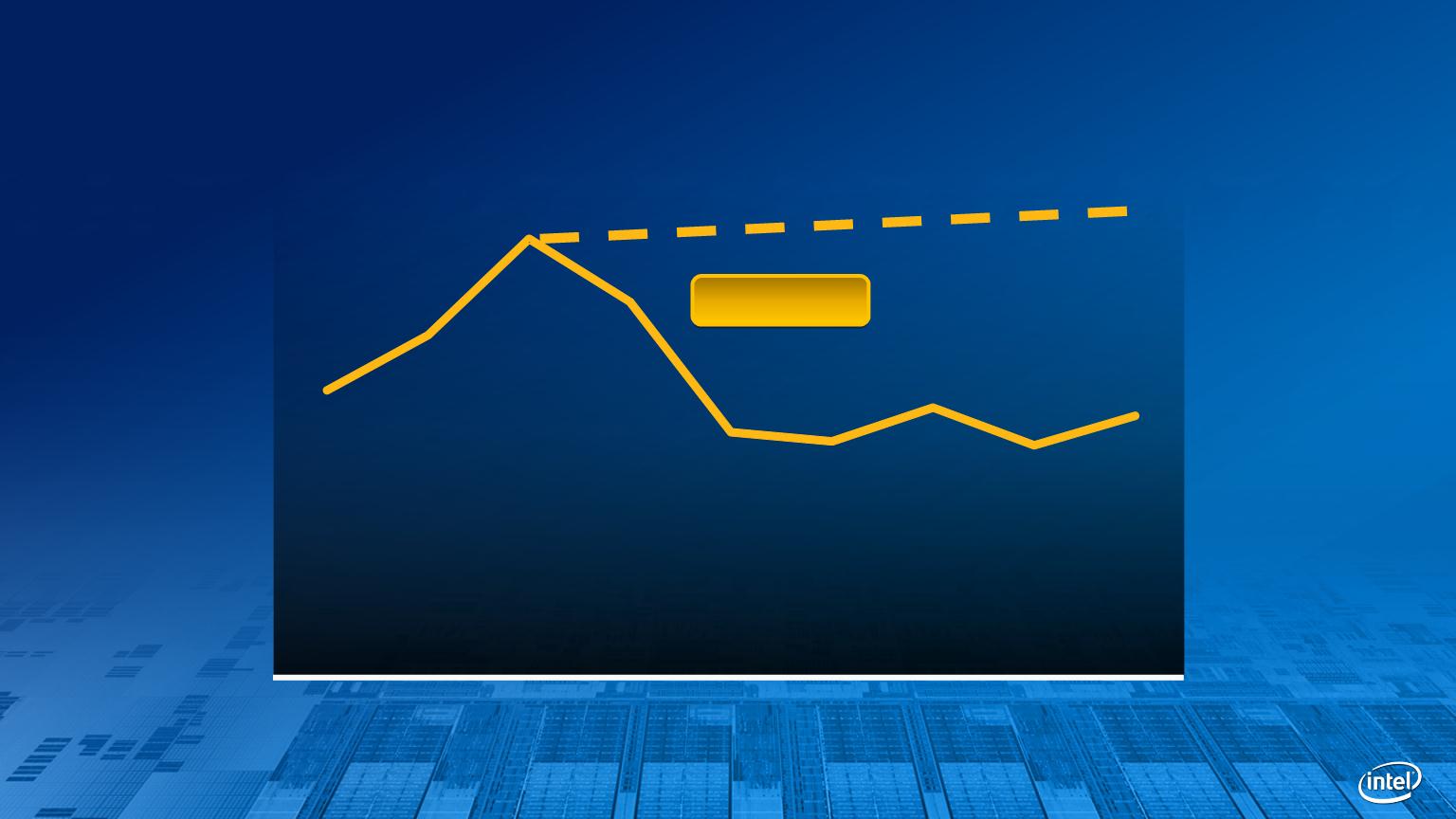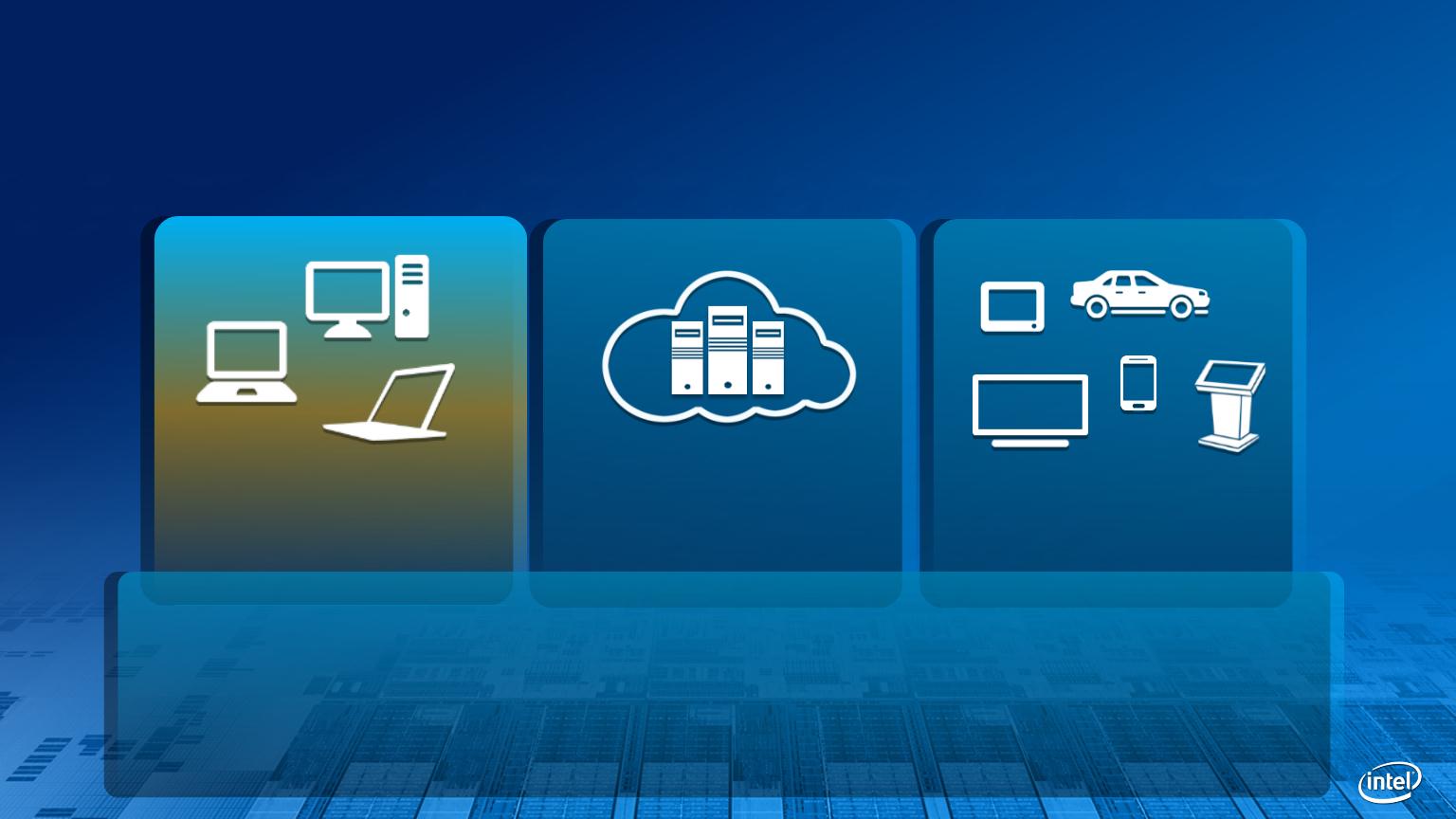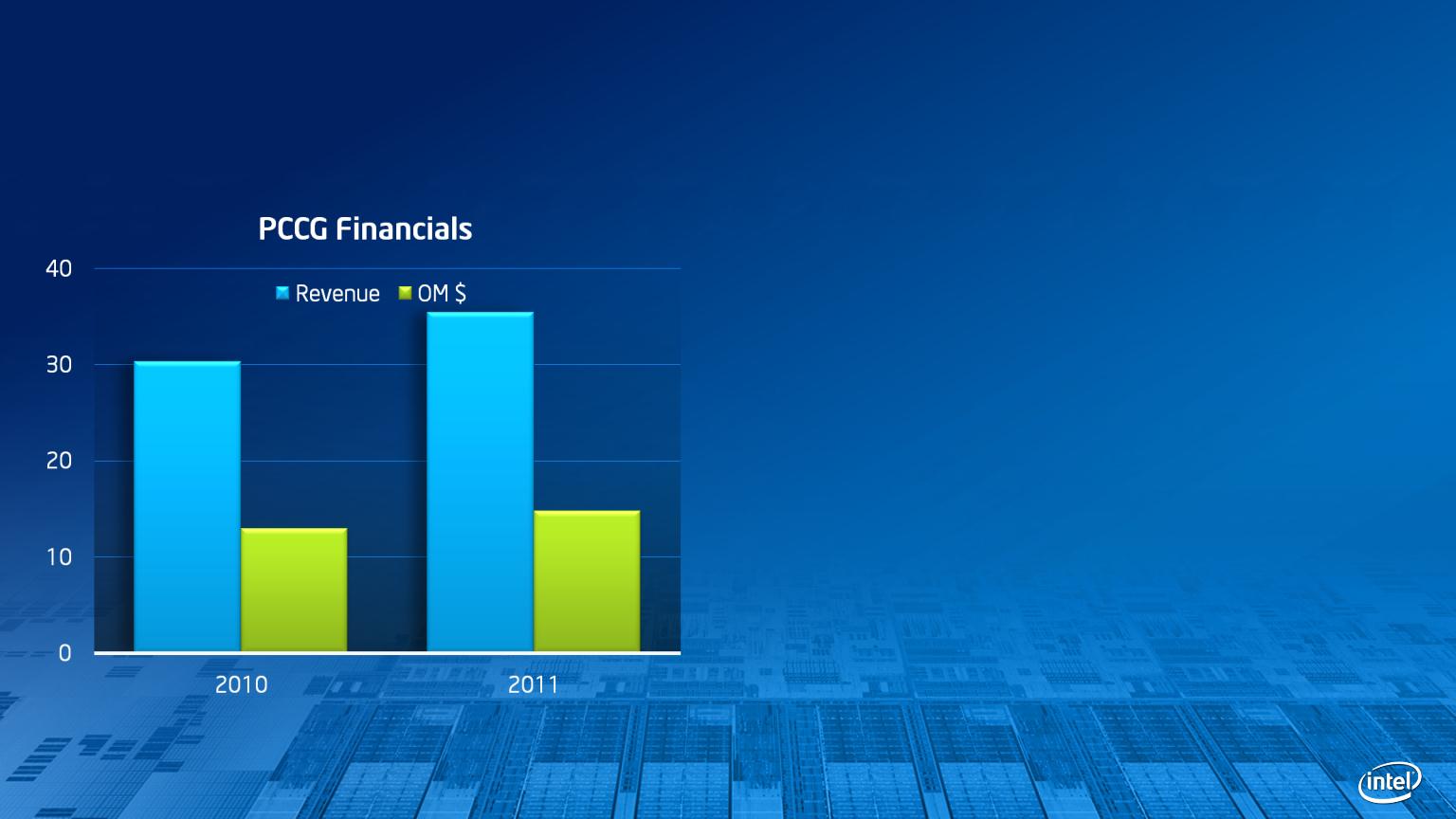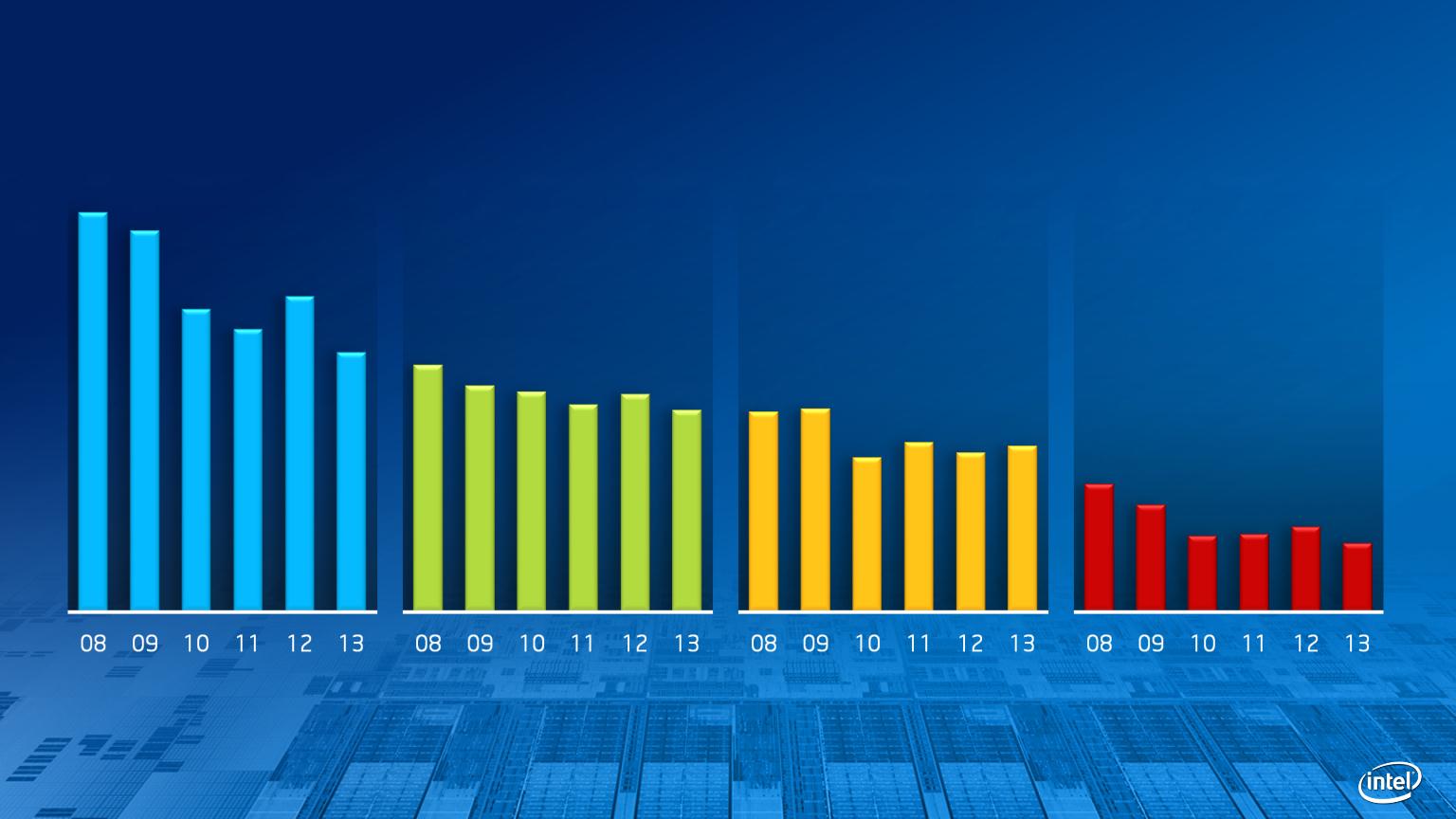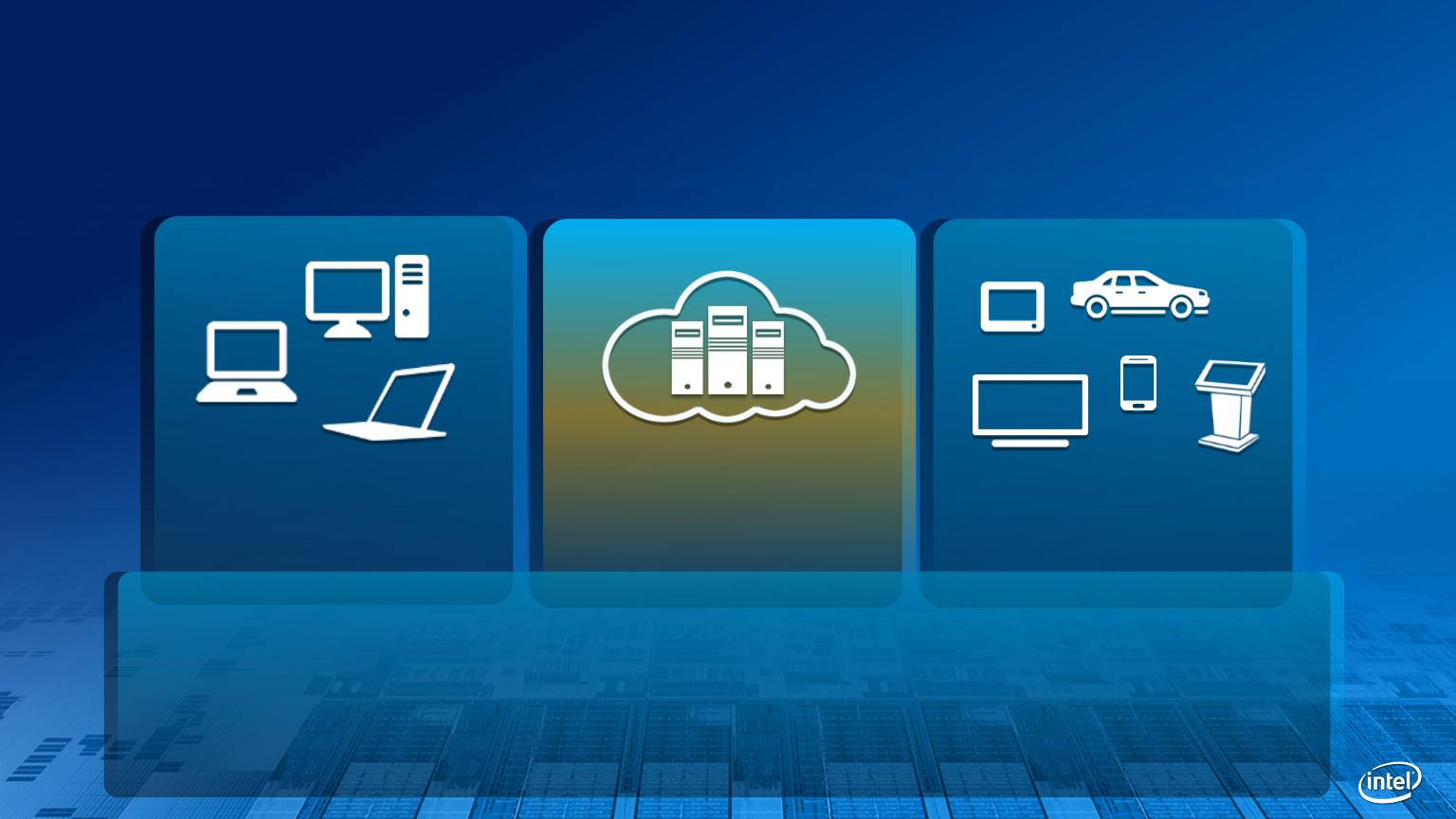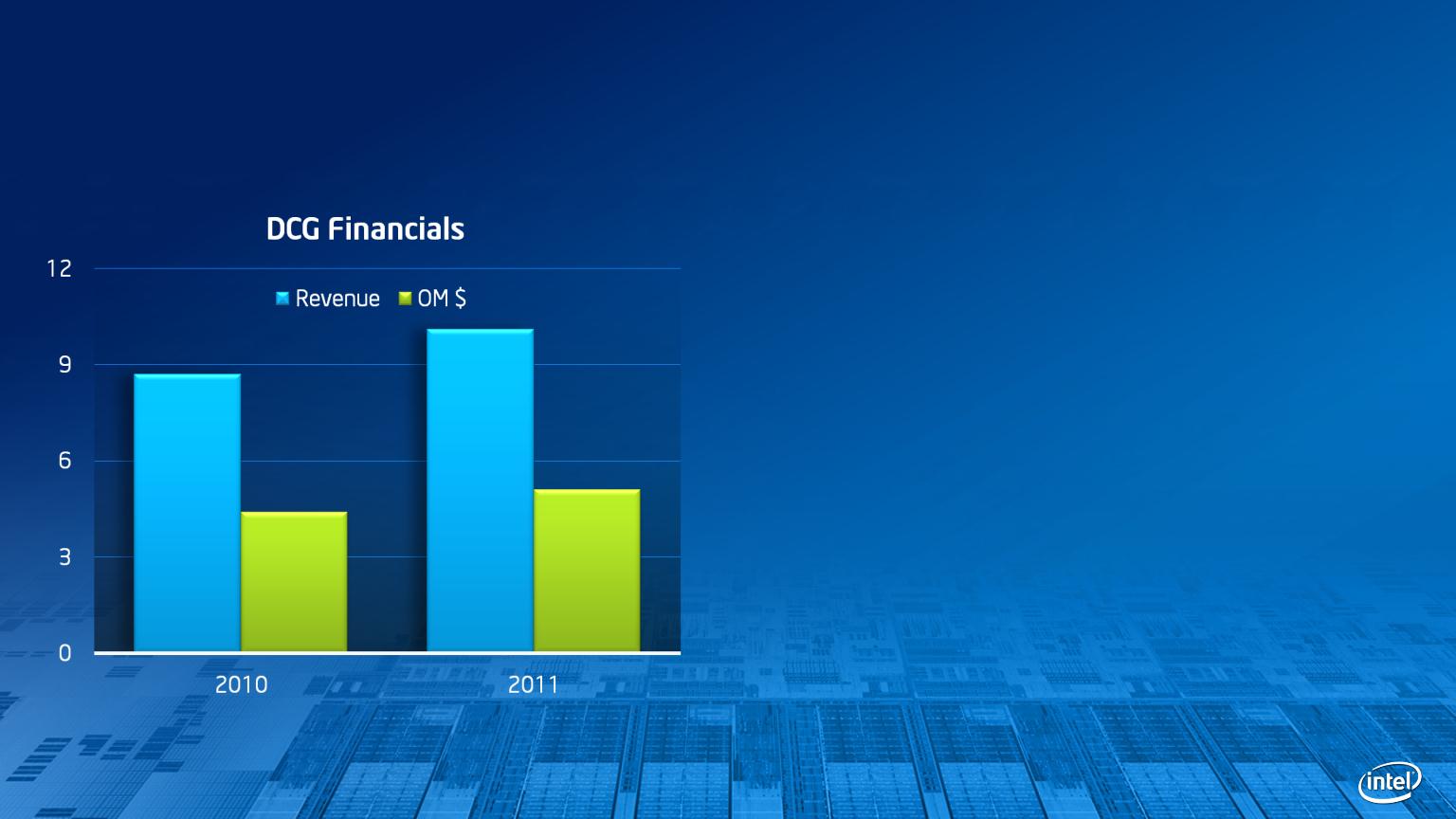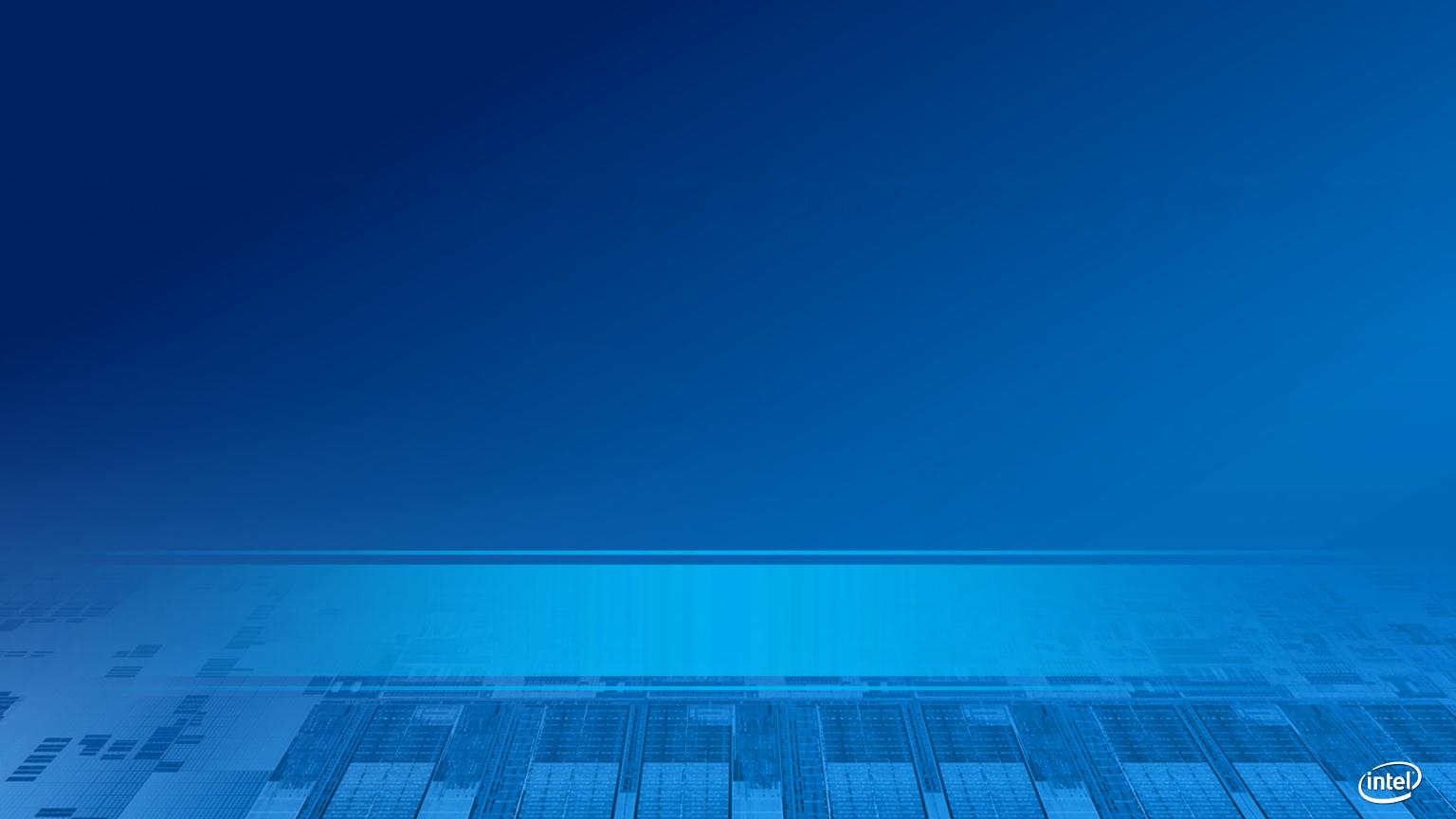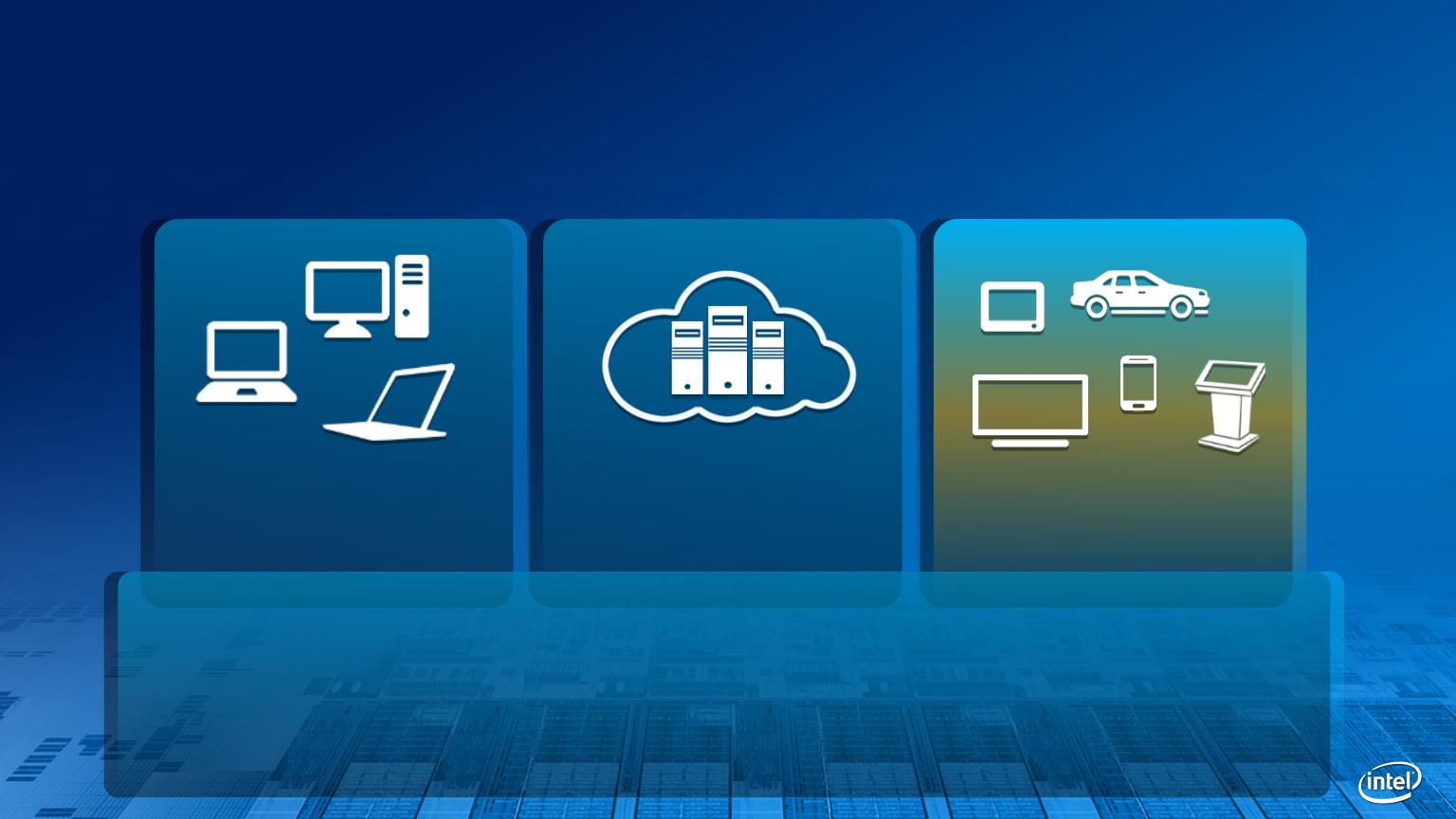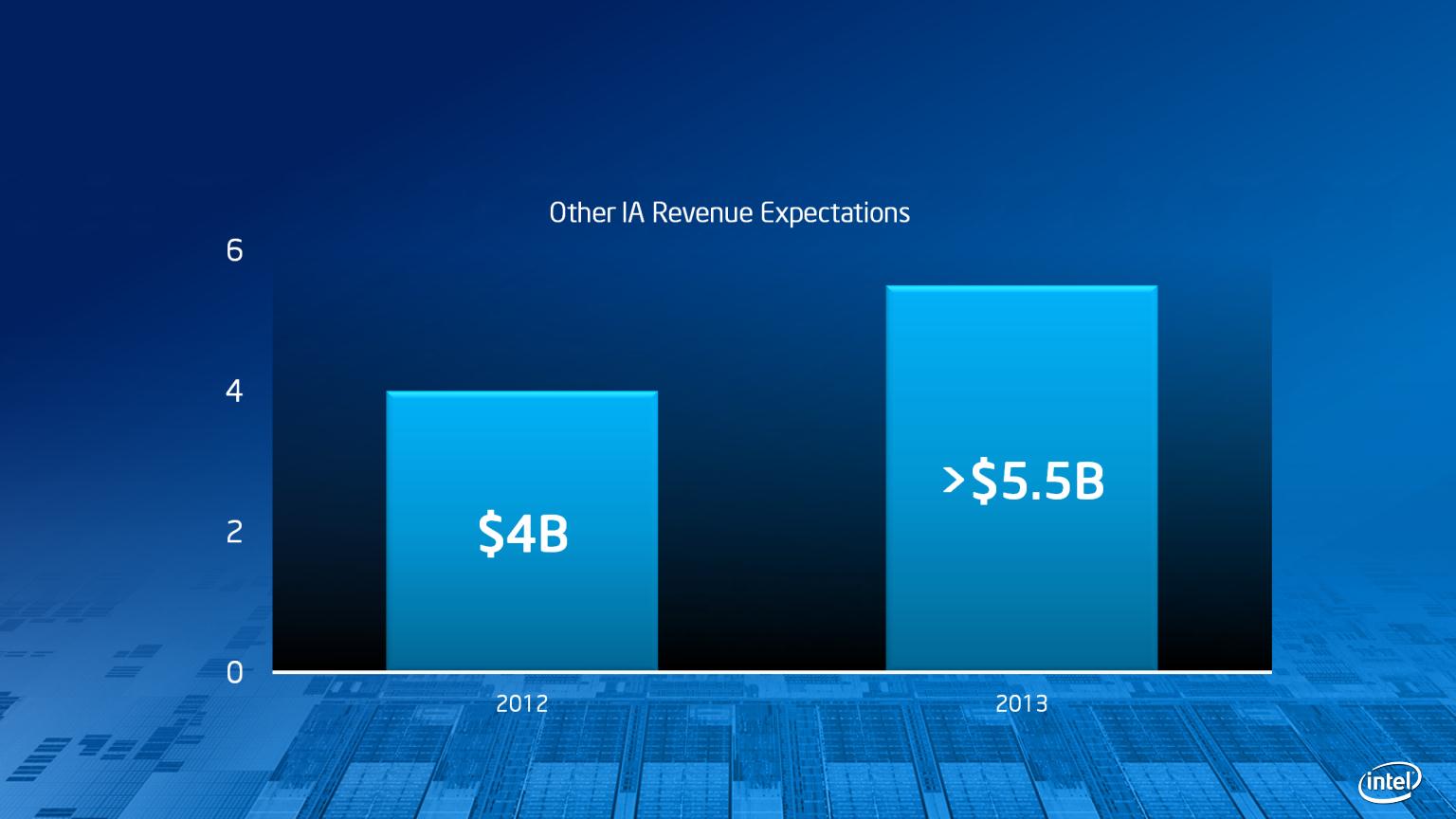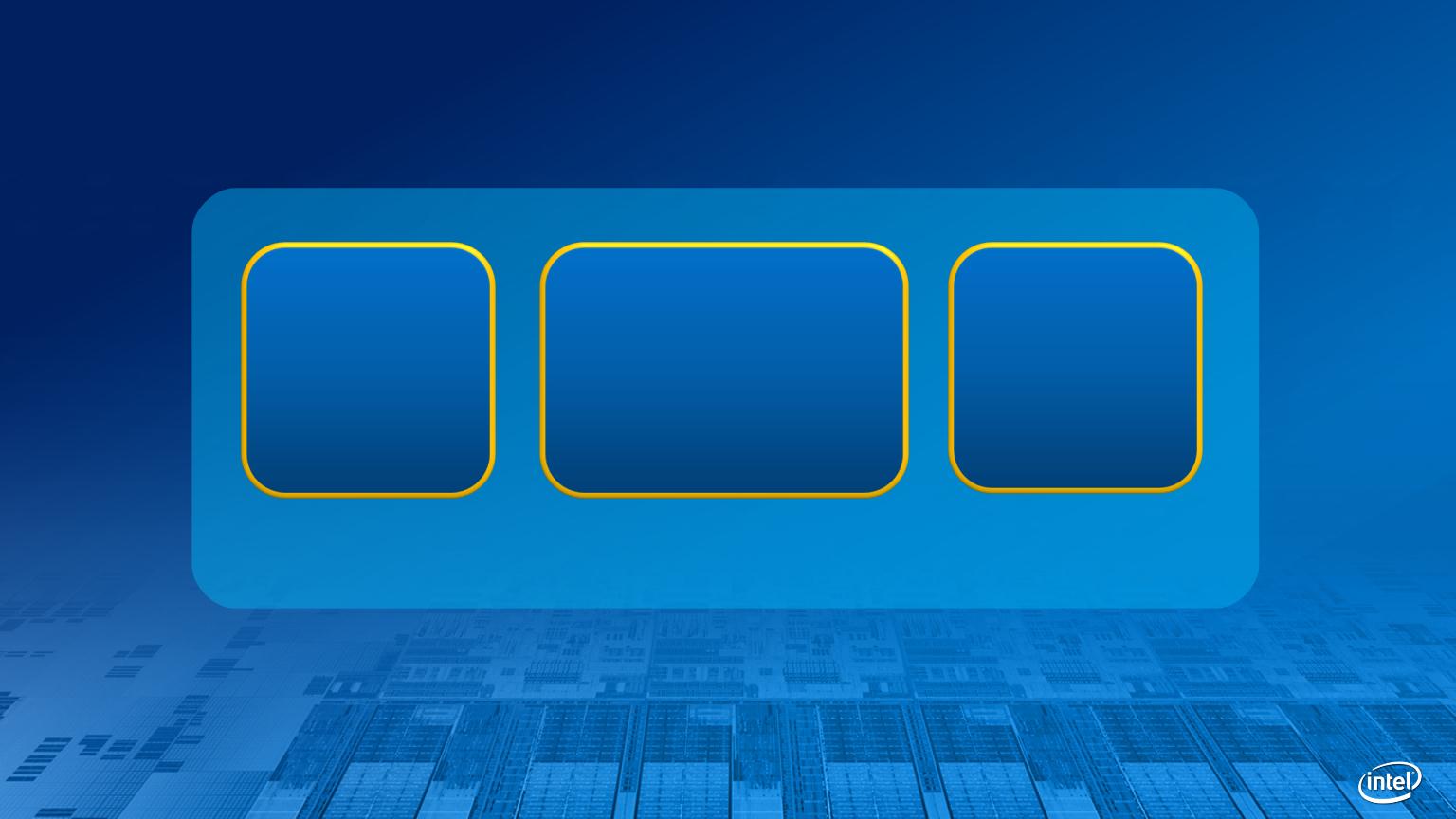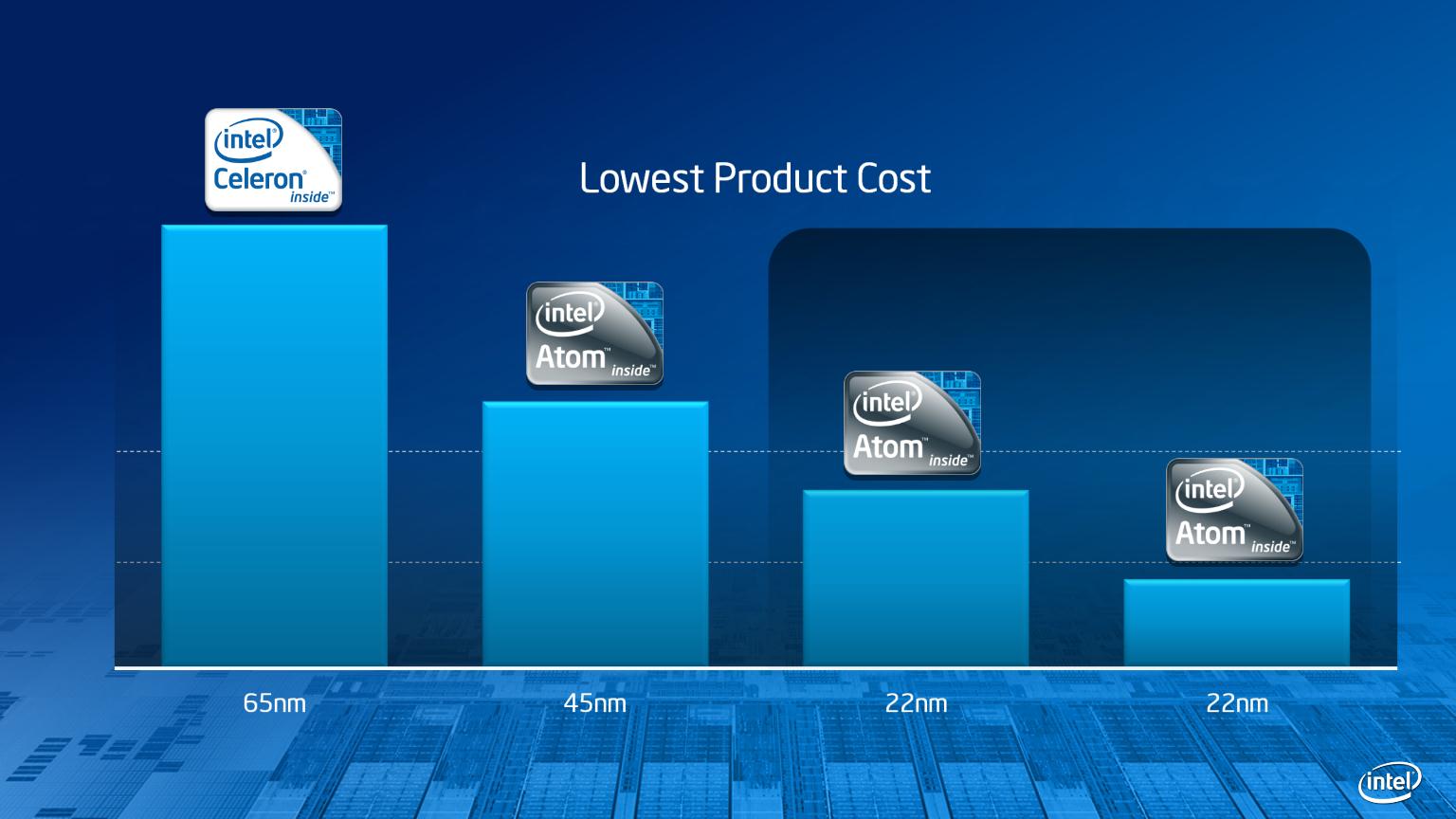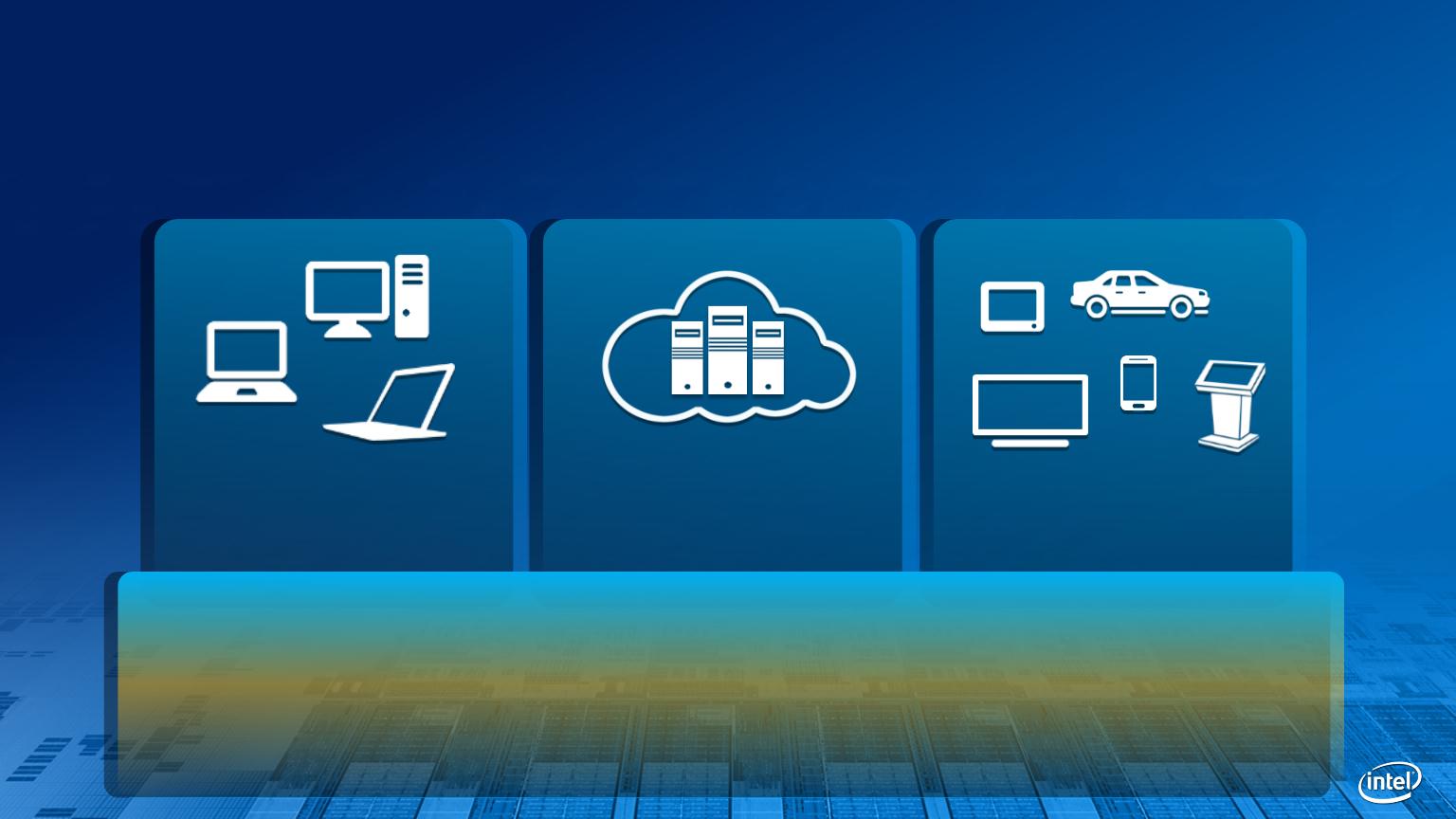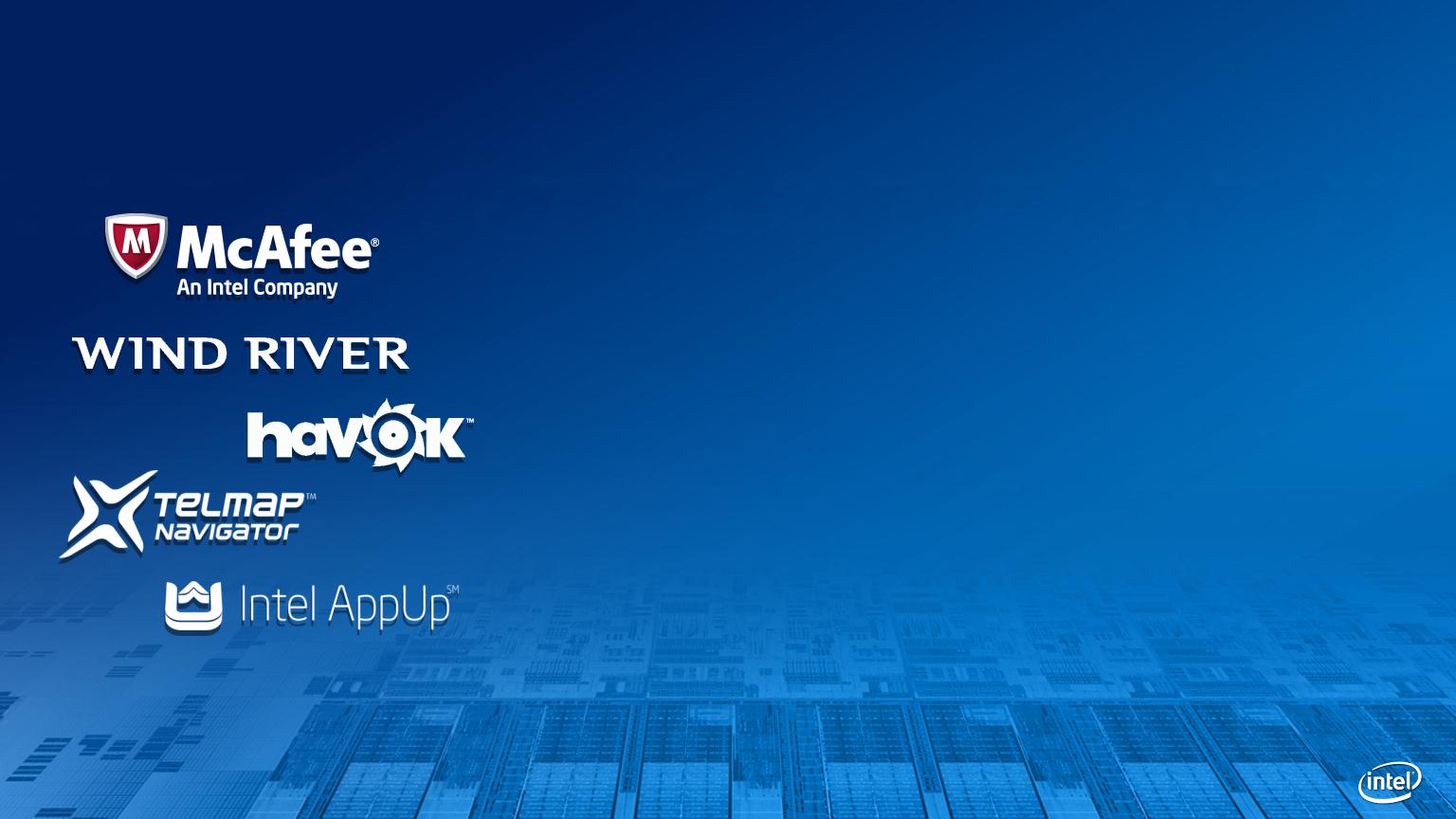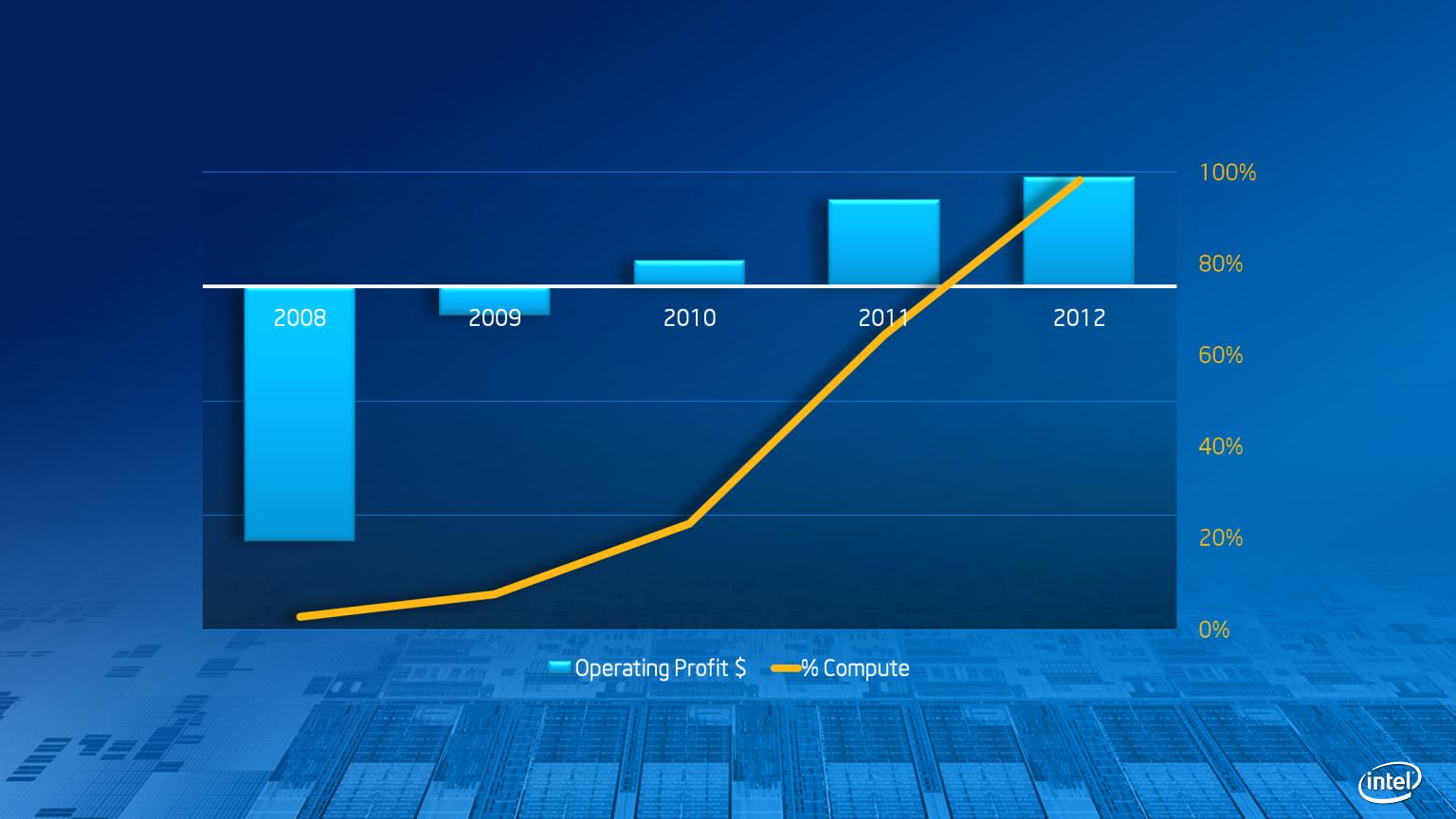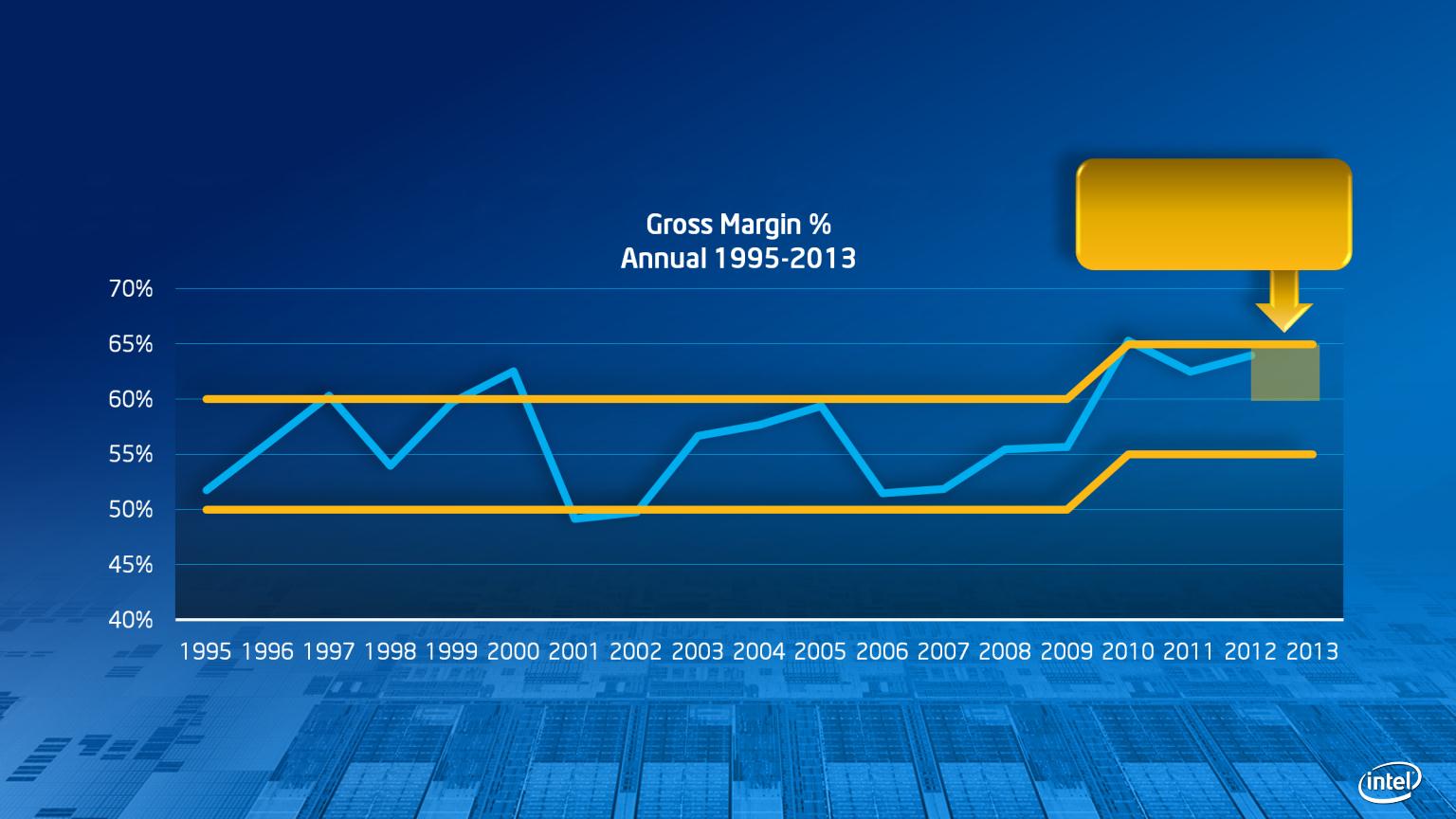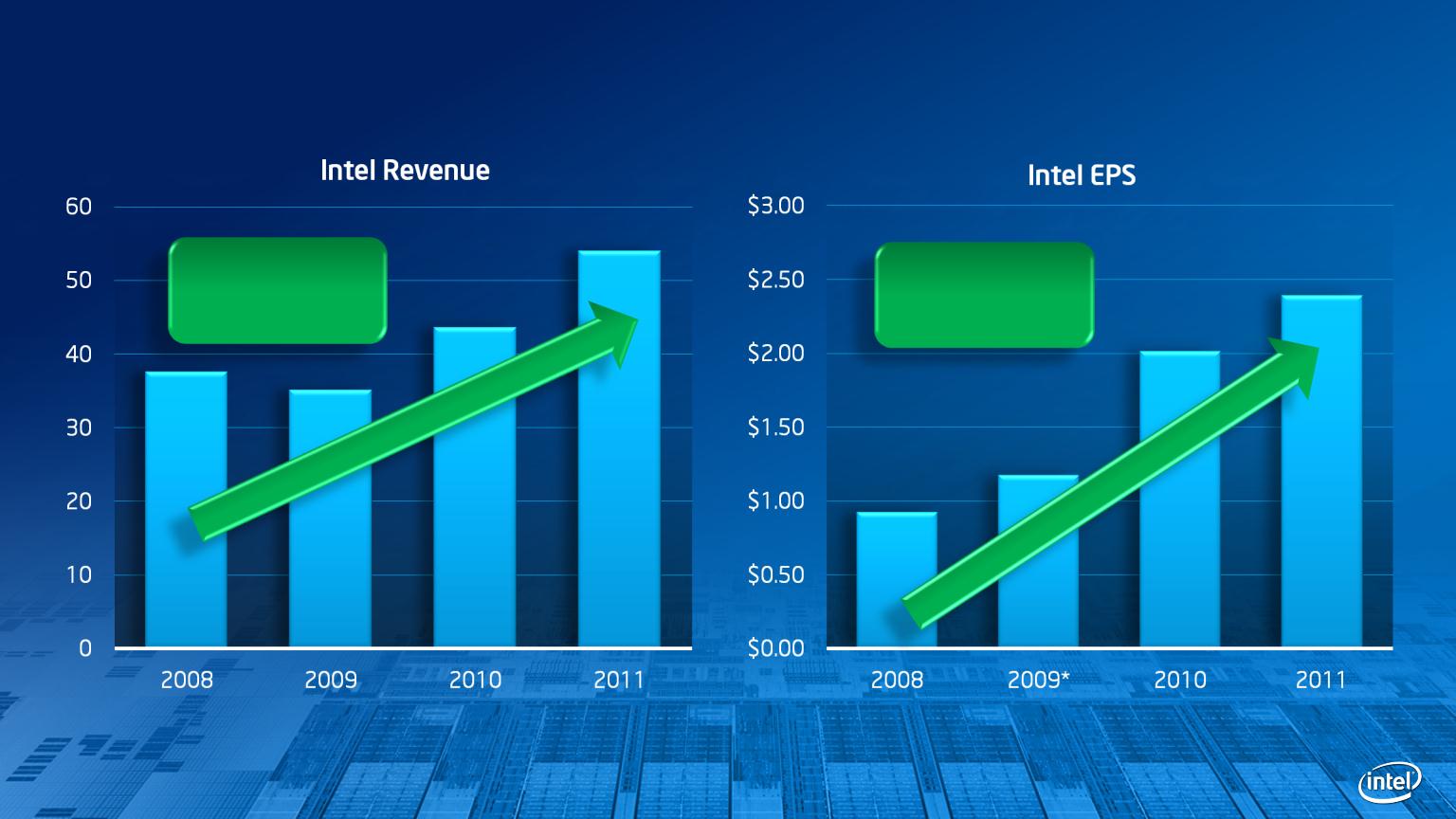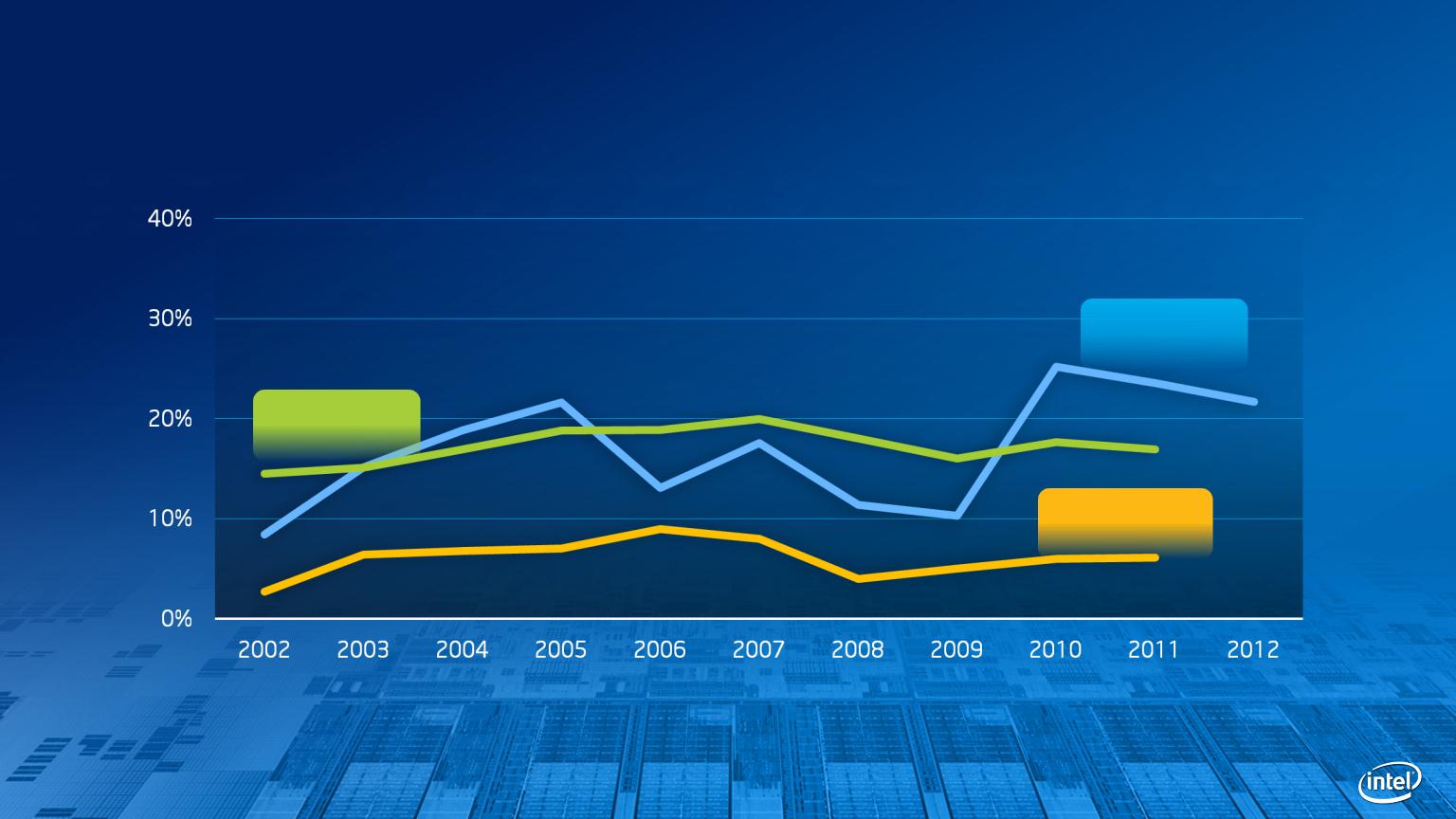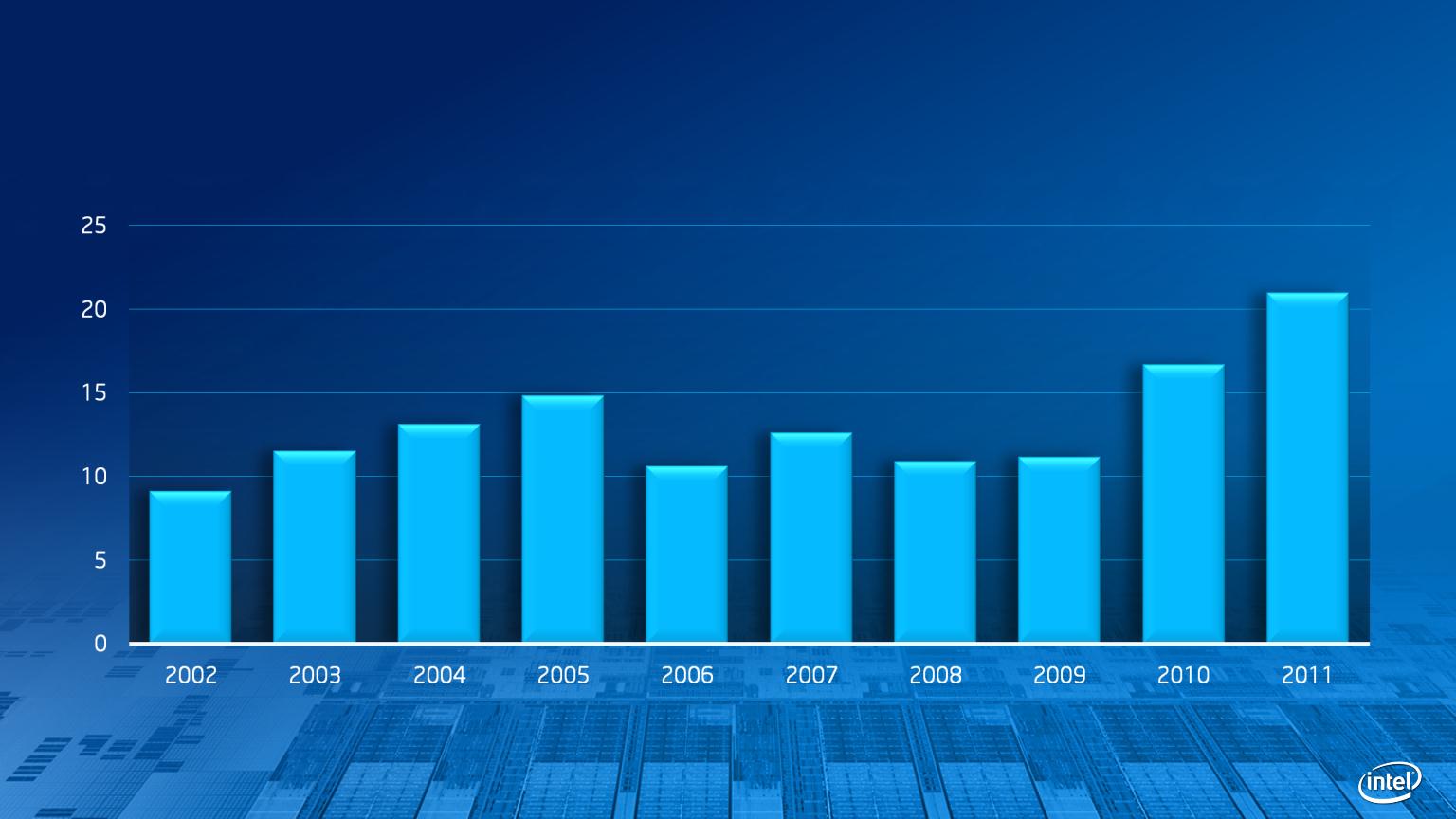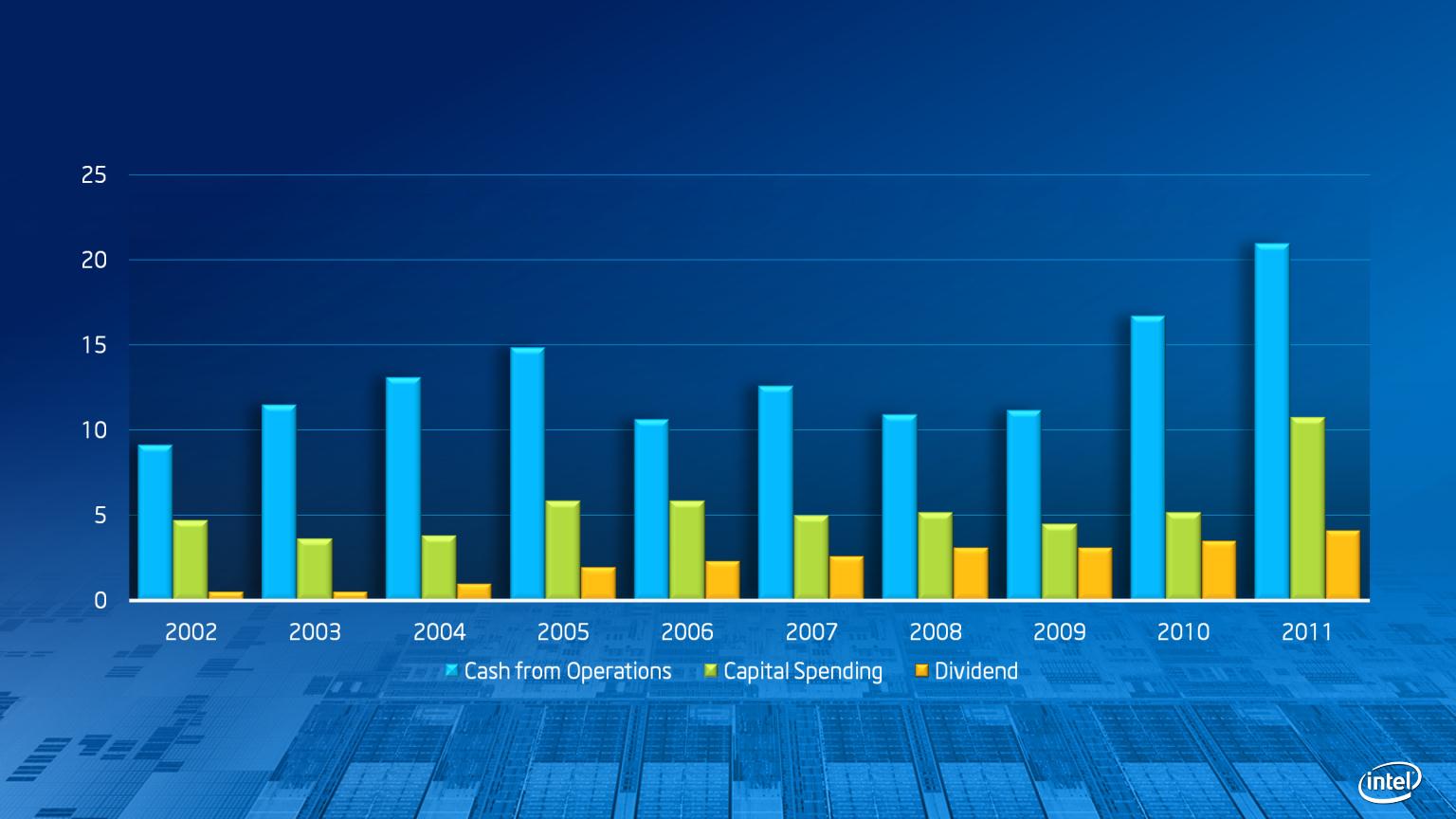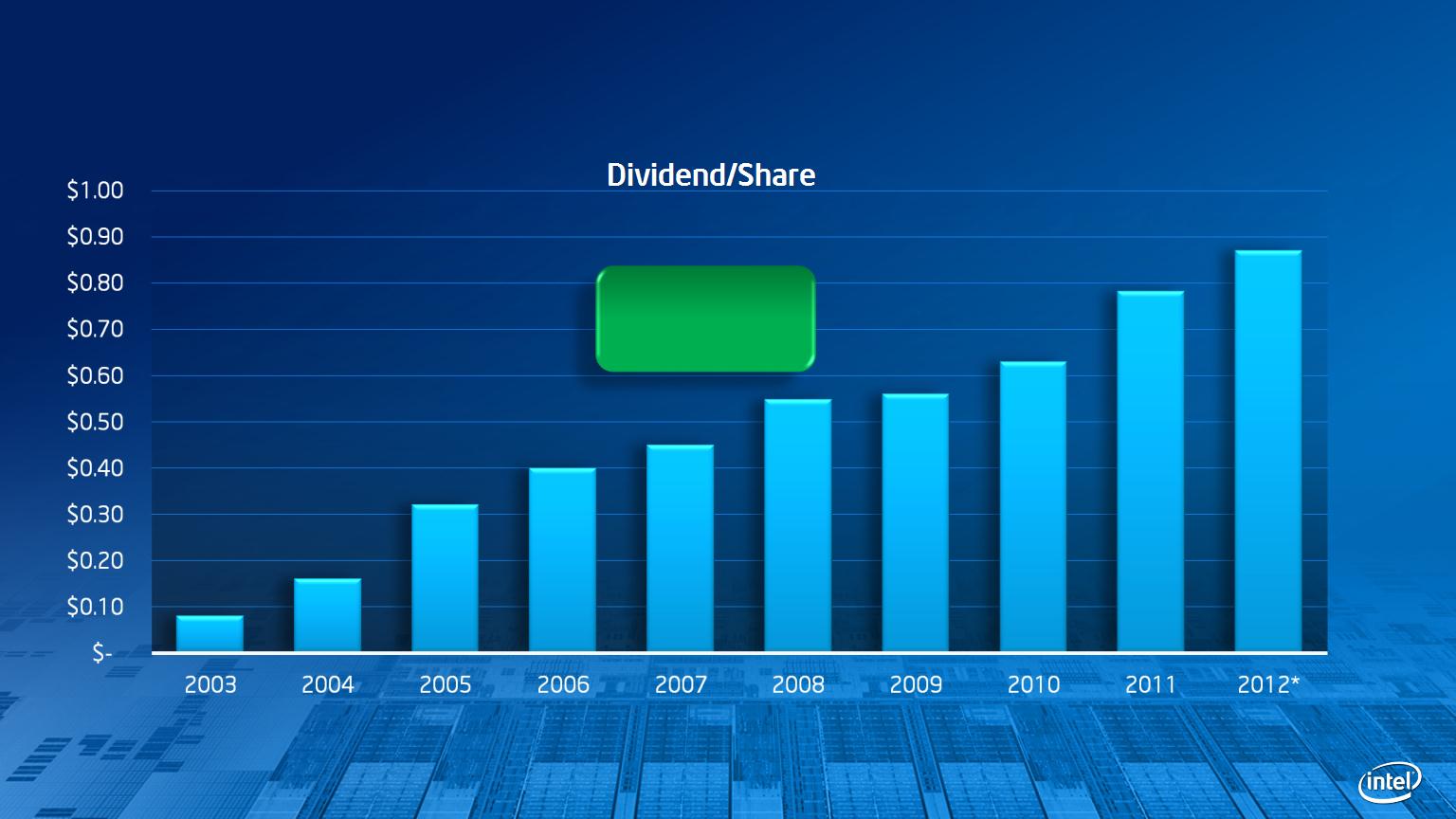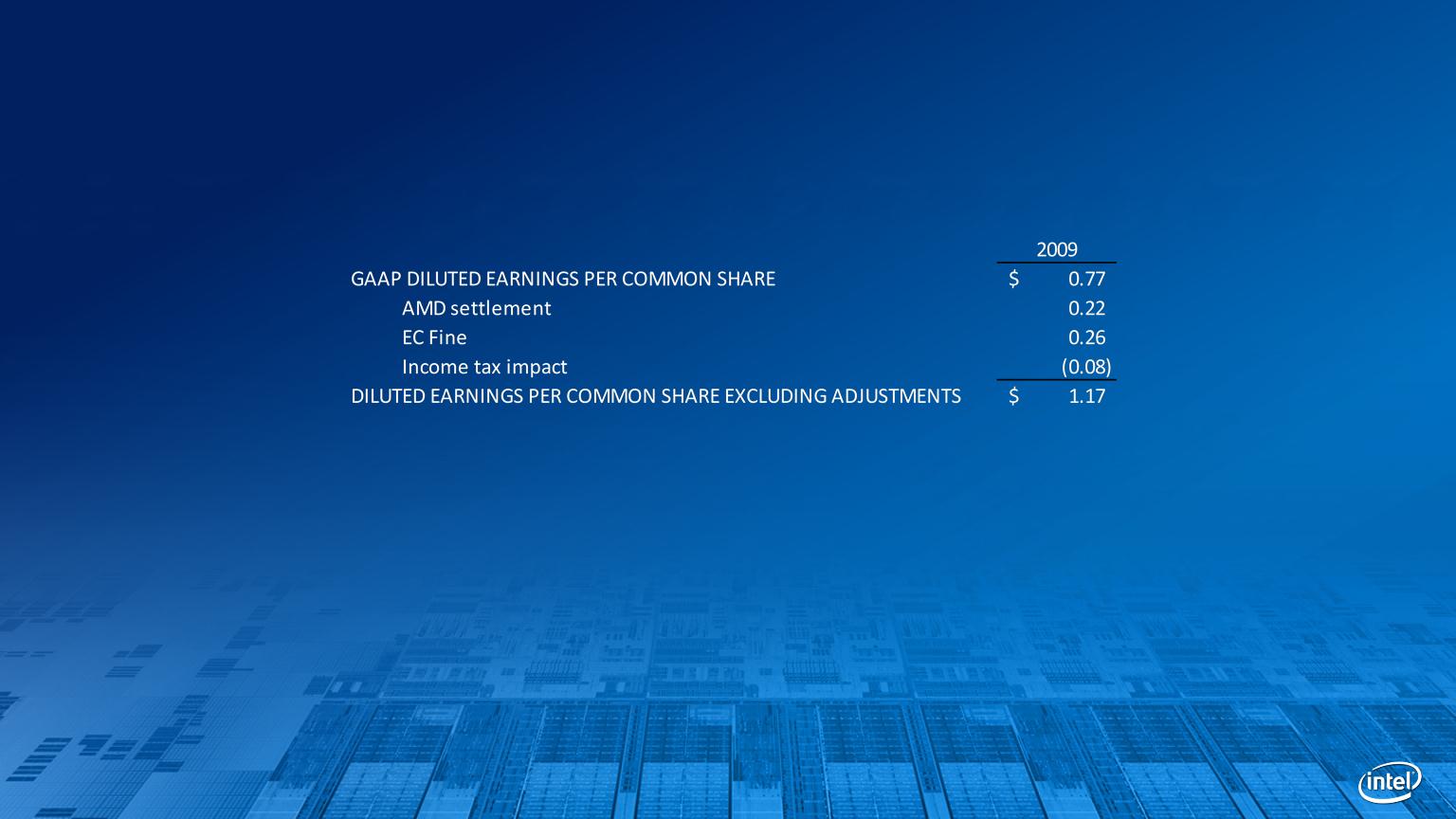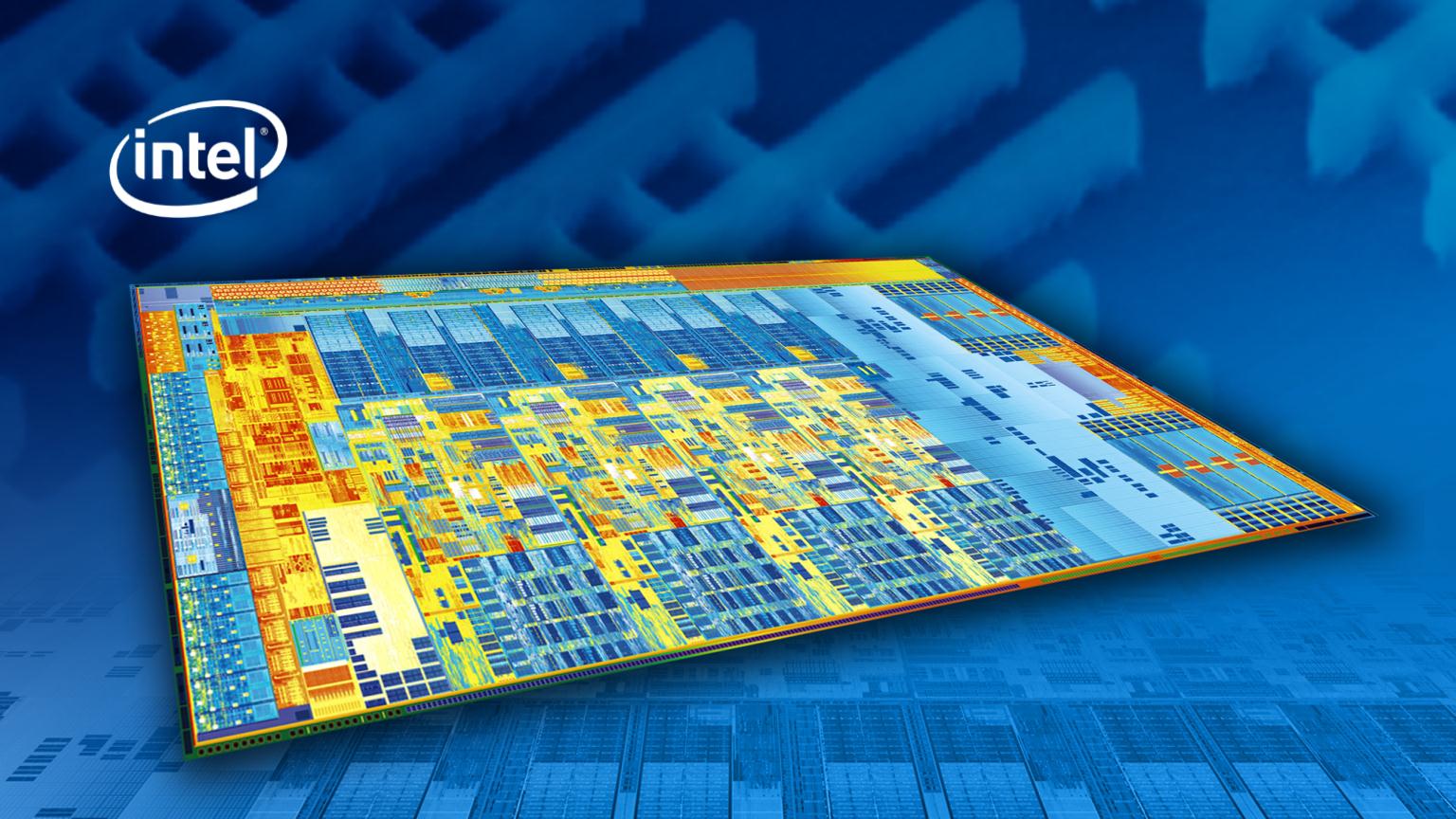INVESTOR MEETING 2012
55
Risk Factors
The above statements and any others in this document that refer to plans and expectations for the second quarter, the year and the future are forward-looking
statements that involve a number of risks and uncertainties. Words such as “anticipates,” “expects,” “intends,” “plans,” “believes,” “seeks,” “estimates,” “may,” “will,” “should”
and their variations identify forward-looking statements. Statements that refer to or are based on projections, uncertain events or assumptions also identify forward-
looking statements. Many factors could affect Intel’s actual results, and variances from Intel’s current expectations regarding such factors could cause actual results to
differ materially from those expressed in these forward-looking statements. Intel presently considers the following to be the important factors that could cause actual
results to differ materially from the company’s expectations. Demand could be different from Intel's expectations due to factors including changes in business and
economic conditions, including supply constraints and other disruptions affecting customers; customer acceptance of Intel’s and competitors’ products; changes in customer
order patterns including order cancellations; and changes in the level of inventory at customers. Uncertainty in global economic and financial conditions poses a risk that
consumers and businesses may defer purchases in response to negative financial events, which could negatively affect product demand and other related matters. Intel
operates in intensely competitive industries that are characterized by a high percentage of costs that are fixed or difficult to reduce in the short term and product demand
that is highly variable and difficult to forecast. Revenue and the gross margin percentage are affected by the timing of Intel product introductions and the demand for and
market acceptance of Intel's products; actions taken by Intel's competitors, including product offerings and introductions, marketing programs and pricing pressures and
Intel’s response to such actions; and Intel’s ability to respond quickly to technological developments and to incorporate new features into its products. Intel is in the process
of transitioning to its next generation of products on 22nm process technology, and there could be execution and timing issues associated with these changes, including
products defects and errata and lower than anticipated manufacturing yields. The gross margin percentage could vary significantly from expectations based on capacity
utilization; variations in inventory valuation, including variations related to the timing of qualifying products for sale; changes in revenue levels; segment product mix; the
timing and execution of the manufacturing ramp and associated costs; start-up costs; excess or obsolete inventory; changes in unit costs; defects or disruptions in the
supply of materials or resources; product manufacturing quality/yields; and impairments of long-lived assets, including manufacturing, assembly/test and intangible assets.
The tax rate expectation is based on current tax law and current expected income. The tax rate may be affected by the jurisdictions in which profits are determined to be
earned and taxed; changes in the estimates of credits, benefits and deductions; the resolution of issues arising from tax audits with various tax authorities, including
payment of interest and penalties; and the ability to realize deferred tax assets. Gains or losses from equity securities and interest and other could vary from expectations
depending on gains or losses on the sale, exchange, change in the fair value or impairments of debt and equity investments; interest rates; cash balances; and changes in
fair value of derivative instruments. The majority of Intel’s non-marketable equity investment portfolio balance is concentrated in companies in the flash memory market
segment, and declines in this market segment or changes in management’s plans with respect to Intel’s investments in this market segment could result in significant
impairment charges, impacting restructuring charges as well as gains/losses on equity investments and interest and other. Intel's results could be affected by adverse
economic, social, political and physical/infrastructure conditions in countries where Intel, its customers or its suppliers operate, including military conflict and other security
risks, natural disasters, infrastructure disruptions, health concerns and fluctuations in currency exchange rates. Expenses, particularly certain marketing and compensation
expenses, as well as restructuring and asset impairment charges, vary depending on the level of demand for Intel's products and the level of revenue and profits. Intel’s
results could be affected by the timing of closing of acquisitions and divestitures. Intel's results could be affected by adverse effects associated with product defects and
errata (deviations from published specifications), and by litigation or regulatory matters involving intellectual property, stockholder, consumer, antitrust, disclosure and
other issues, such as the litigation and regulatory matters described in Intel's SEC reports. An unfavorable ruling could include monetary damages or an injunction
prohibiting Intel from manufacturing or selling one or more products, precluding particular business practices, impacting Intel’s ability to design its products, or requiring
other remedies such as compulsory licensing of intellectual property. A detailed discussion of these and other factors that could affect Intel’s results is included in Intel’s
SEC filings, including the company’s most recent Form 10-Q, Form 10-K and earnings release.
